|
I read a book recently, called The book of Ho’oponopono, about a Hawaiian meditation practise, which teaches a simple mantra which goes like this: I’m sorry Forgive me Thank you I love you I started reciting this to our old horse Jo Cool, as I approached the end of ‘the long goodbye’ to him, which is something familiar to every animal lover I am sure. I found the mantra fit perfectly for what I wanted to say to old Jo, as I tended to him each day, feeding him his breakfast hay, then later on his ‘second breakfast’ bucket feed, when I gave him a daily grooming with his ‘special soft brush’, the one his liked, especially on his neck, where he loved to be massaged, and over his eyes and along his body once he began to relax. When I cleaned the manure from his paddock, when I returned with his dinner hay and his dinner bucket. When I looked out of the glass sliding doors of my bedroom at daybreak and could see his soft buckskin appaloosa coat glowing in the dawn light at the fence line of the paddock he lived in when he could no longer live safely with the herd, as his eyesight got too poor for him to judge their intentions or distance. He now lived with a new friend, Tex, my daughter’s gelding who is equally sensitive and alert to the environment he is in. Jo and Tex would mutually groom each other over the fence, I would watch them delicately initiate these grooming sessions, tentatively gaining each other’s consent and willingness to proceed. It was lovely to see Jo connect with Tex, even though he already had a companion in Buddy the mini pony. Jo was always a sensitive horse, reactive to any sudden movements or unexpected touch. The horse that we rarely saw laying down asleep. The one who ran the herd like a stallion in partnership with the lead mare, until he was too poor sighted to lead them and younger, more fitting geldings took that role, and for the first time we saw marks on his body when he started losing the competition for position. He was the horse I could trust with the most novice person, as he would try so hard to do whatever he thought they were asking…and would move lightly out of their way when they fumbled or got in his way. The horse Justin and I rode to our highest level of personal achievement so far, and who taught me a new level of awareness, of patience, of the value of waiting, waiting, waiting for the digestion of thoughts, the return of relaxation and understanding after the discomfort of learning a new pattern, a new level of human request. ‘Just when you think you’ve waited long enough’ Jo taught me…’wait another 30 seconds…you won’t regret it’. He was last of our ‘travelling horses’, the ones who lived with us during the 4 year chapter of living life on the road in a 30’ gooseneck trailer, with 4 horses and our 2 youngest children, moving from state to state teaching horsemanship clinics before buying the property we now live on. All 4 of those ‘travelling horses’ are buried here now, that chapter is finally closed with the burial yesterday evening of old Jo Cool. He joins his favourite mare Libby, gelding mates Cooper and Stormy. This morning is the first morning without him in 23 years. No matter how or when you make this decision, it is still a hard call to make, as any animal lover knows. Whether ‘early’, whilst your beloved animal is still healthy, happy and not suffering and struggling to stay alive, or whether in a moment when it is the only call to make, because your beloved animal is mortally wounded, or in crisis when it’s body is clearly suffering acutely. I have experienced all of these outcomes, many times, over a long life with horses. 9 times I have said goodbye, and it does not get easier in my experience. There is no way to tell someone when it is the right time to make the decision. It’s always a very hard decision to make. What I appreciate so much, is the reassurance from my vet that making this call whilst my beloved horse is still relatively healthy, and not suffering, is a good one. Even though he could live for many more years if left to his own ‘end’. It relieved me of the guilt of calling it ‘too soon’, I prefer to not wait until the regret of it being ‘too late’. I have been there before too. I am overwhelmed with gratitude for the service of veterinarians in this process. In my experience, they are full of empathy, practical but considerate. I don’t know how they do it. It must be hard. Goodbye Jo Cool. I have loved you since I first met you at a clinic when you were 3 years old. I am so grateful we got to spend 23 years with you, after we bought you as a 5 year old, when you were unexpectedly available for sale. What a life we have had together, Justin and I have many wonderful memories of the places we went, the events we did and the shared stories of our time with you. Thank you - we love you Peace to animal lovers all.
2 Comments
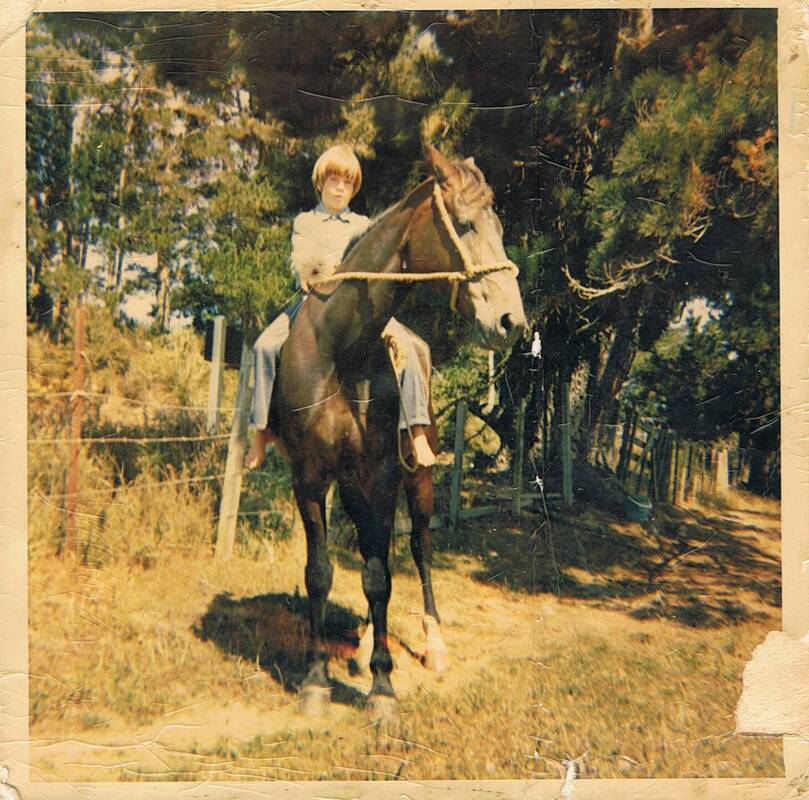 WHEN ‘NEVER ENDING SELF IMPROVEMENT’ BECOMES ‘NEVER GOOD ENOUGH’. I have had a lifelong love affair with horses. My love for horses is a dominant part of my earliest memories. I share a common story with so many others, a story of being magnetically attracted to the sight, sound, smell and feel of horses, a yearning to be near them, to ride them and to be magically transported into a life where I could be surrounded by them. My goals and dreams have always been attached to a life with horses. Along the way, new elements were added to my dream of a life with horses. Competition goals, pursuit of knowledge and competence, of excellence and even a career involving horses came into my reality. As I look back on my life with horses, both personal and professional, I cannot exactly pinpoint where my dreams of enjoying the company of horses began to include the dream of professional achievement with horses. It was just a natural progression for me. I was keen to share whatever I learned, for their own benefit in the company of horses. My very first ambition around horses was about identity. Right from a very early age I was desperate to be identified as a ‘horse person’. I was so happy to step onto the town bus every weekend I could, on my way out of the suburbs to where I kept my first horse, with my plastic bucket containing my horse’s brushes, hoof pick and treats, dressed in my dirtiest jeans and long sleeved shirt, my gumboots (oh how I wished for proper jodhpur boots!) and my hair in a pony tail. By the time I took that bus homeward, I smelled like horse, and I was proud of it. I hoped every person on that bus would look at me and think ‘that’s a horse girl’. (photo taken at around age 10, riding a borrowed Standardbred gelding called 'Flash'...2 years before I was given my own 'first horse' Tania, and before I grew that pony tail!...my gumboots would fall off as soon as I mounted...but you can see that bucket in the background that I took on the bus) My horse brought me joy and contentment, adventure and exhilaration. The first thing I wanted to achieve as a young person was to be seen as a horse person. In adulthood, I eventually found myself in the competition arena, and then in the role of riding instructor… I built a career as a horsemanship coach, which to date is over 30 years long. My chosen horsemanship career path, and the mentorship I was drawn to, was very much oriented towards people and programs that lived up to the idea that how the horse 'felt' should not being sacrificed for the human’s desire for achievement, whatever ‘arena’ that might be in. Now, 30 years in, although my competition career got shelved early on, I can say that there was still a constant push and pull during my career between focusing on my achievements as a teacher and what I could show others with horses, and the enjoyment of ‘personal’ time with my own horses. Somewhere in my pursuit of ‘never ending self-improvement’ with my horsemanship, my teaching life and my career achievements, I lost sight of the enjoyment part of my life with horses, and it became a feeling of ‘never good enough’. This started as a judgement of myself as I compared myself to others, gave more time and energy to other people’s dreams and goals with horses and got bogged down with trying to live up to some perceived ‘goalpost’ that kept moving further and further away it seemed. I realise now, this internal voice was silencing the joyful, adventurous and playful self. Achievement and enjoyment were no longer in sync for me, they were in competition. Eventually enjoyment was being set aside as less important. I discovered, when enjoyment was put on ‘the shelf’, achievement loses it’s appeal and dread creeps in…for the very thing you love. The lockdown years of 2020/21 were ‘pause for thought’ for me and I know they were for so many others as well. I was very aware of how privileged a life I was living during that time, but I needed to lean into that ‘enforced pause’, to allow myself to ‘enjoy’ what I had already achieved and turn loose to ‘time for self’. I was having my achieve/enjoy coin flipped big time. NOT achieving anything professionally for 2 years was hard, allowing myself to just enjoy an ordinary, a daily life that did not need a career outcome, giving up any future goals however temporarily, was hard, but in retrospect a gift. I had become addicted to ‘never ending self improvement’ at the expense of being present, content and happy with where I was already at, and now I had permission to celebrate what I had already worked hard to achieve, rather than remain addicted to the labour itself. Even in the middle of so much uncertainty during those years, I felt relief. I embraced the ordinary during that period, the daily horse duties, the property maintenance and building projects, the grooming, the hoof trimming, the constant presence of my herd of horses and the mindful meditative action of manure collection…life slowed, the rhythm got regular, I felt more in step with nature, the sun’s rising and setting, the seasonal changes…the pace allowed me to think more, notice more, reflect and recharge…to consider the ‘reset’ on the other side of that period, without the pressure of any timeline or deadline. I heard that word a lot after the covid lockdown years. Reset. Like a computer being rebooted, my brain got the chance to think differently. I like to think about words sometimes, their meaning and sometimes different angles of their construction. The word I keep thinking about at the moment is - extraordinary. I think about how if you say it like this - extra ordinary - it twists the interpretation of it. I like the idea that to live an extraordinary life is very simple. Just live an extra ordinary one. My life is extraordinary….I know this, I have exceeded every expectation, every dream I had as a child of what I hoped my life could be with horses. I also see that this was made possible by the extra ordinary moments, every one of them. Every extra ordinary moment I have with a horse is a gift I am so grateful for, and when I focus just on those extra ordinary moments, something extraordinary develops. I enjoy my time with my horse more, and ironically, I also achieve more. I just need to remember to keep balancing by focusing on the enjoyment element first. So this is what I remind my students, just as I remind myself. Enjoy your horse! Yes, you want to achieve things, so do I…but first, enjoy this moment and every one that follows, think about what a gift it is that you are in the presence of this horse. How lucky we are. Let’s not forget, in our pursuit of ‘excellence’, to more often give ourselves a moment of appreciation for getting to exactly this point, right here, right now….on our way to our dreams and goals. Let’s not forget, we are already living our dream with our horses, the one we had as children. It was simple, we just wanted to be around them. Let’s not allow our desire for achievement to overshadow this enjoyment…and trust that enjoyment will always make room for us to achieve more. Weaning is a major milestone in your horse’s life and an extremely important process for the horse owner to be involved in, emphasis on the word PROCESS! Weaning can be a stress free, seamless progression for a youngster, or it can be a highly damaging event - mentally, emotionally and physically. I’ve heard many horror stories of serious injury and even deaths of weanling foals trying to escape from stables, yards, paddocks and even over the tailgates of floats - even in transit! I’ve seen mares highly distressed or deeply depressed from the weaning process on breeding farms.
Separation is for a prey animal, potentially life threatening. They usually react strongly as soon as they feel separated from their bond mates, including people they are attached to and this reaction can result in harm to them as well as their handlers. It’s extremely distressing for a loving owner to see their foal and/or mare in this state during weaning. Along with possible injury or death from attempts to escape containment, there is often internal damage from stress such as ulcers, and for the mare, the sudden cessation of suckling from her foal the likelihood of mastitis occurring. Weight loss, lethargy, ‘stable vices’ like weaving/cribbing/tongue sucking often begin during the weaning process. Sudden and shocking separation of a mare and foal is completely unnecessary and can be replaced with a bit of planning, using psychology and patience. If you have a good relationship with both mare and foal such as I’ve been talking about in my previous articles, it can be a seamless, non-eventful process that results in both mare and foal being happy and stress free, with none of the problems for the foal that can also trigger ‘separation anxiety’ when they are an adult. I often get asked ‘what happens with weaning in nature?’ In a natural herd situation, a mare would be foaling every year potentially, and even if she missed a year, it wouldn’t bother her if her yearling foal was still suckling after this age. The yearling foal would most certainly not be shut out of the herd and separated or denied contact with his/her mother. The arrival of a newborn means the yearling has already most likely been weaned off by it’s mum, or been suckling only if the mare invites or allows it. They are no longer ‘demand feeding’ and the yearling will be an interested onlooker when it’s sibling arrives and unlikely to be included for feeding off the mare. It’s not unknown though for a mare to accept both last year’s foal and the newborn, some mares are extremely ‘maternal’! They are even known to suckle other mare’s foals! In the human controlled horse world, we wean our foals for many reasons, but mostly around the convenience for our own use of a horse, ie. to continue riding/showing the mare without the added presence of the foal, to sell either mare or foal, to begin ‘training’ of the foal or for paddock and/or herd management. To live in the human world, it is usually necessary to wean your young horse at some point so they can learn to adjust to different situations and different herd groupings including pairing with their human, and for the purpose you have planned for that horse. Again, the relationship/partnership with you is going to be paramount if a young horse is to accept and live happily with these arrangements that go against it’s first nature. Another question I get asked is ‘what is the best age to wean a foal?’ Luna is now 6 months old. She is at the age when most breeders wean their foals, but since she was born late in December, her 6 month milestone has landed at the beginning of the southern hemisphere winter. I am going to wait until spring to wean her, meaning she will be 9 months old or more. I have no pressing need to wean her sooner, so I have the luxury of being able to leave her with her mum. I am happy to increase the mare’s feed to meet the added nutrient requirements she will have from suckling her. Already though, on observation, her mother is weaning her naturally and she is more than ready to continue the process. This is an important part of the decision making when it comes to ‘when is the best age?’ For the individual foal, the timing may be best if it is delayed. Luna’s big brother Easy Peasy for example, was not the confident self-reliant individual his little sister is, he stuck much closer to his mother at the age she is now and didn’t bond with anyone else in the herd at a young age so I held off weaning him until at least 10 months to support his emotional wellbeing. Like his little sister, he was a ‘late’ foal, born in December, so the season had a part in my decision too. Luna spends a lot of time away from her mum as has done since she was quite young. She doesn’t panic when her mum goes out of sight, unless it is for prolonged periods, like when her mum decides to ‘go bush’ without the herd, as she often tends to do. Soleil doesn’t worry about her foal, and even when Luna begins to notice she is missing, and starts calling and running from ‘safe place’ to ‘safe place’ looking for her, Soleil responds very belatedly, and usually by wandering in slowly…at which point Luna spots her and goes racing up for a drink. Soleil is NOT a helicopter mum! Her confidence and independence are pretty strong characteristics, and so I don’t anticipate much problem when she is finally separated from Luna. ‘How’ is the next question that comes up with regard to weaning. At present, Soleil and Luna are fed from separate buckets each morning, with Soleil dallied up in her shelter, and Luna free to eat in peace a little away from her. Soleil does NOT share bucket food with her foal, so Luna wanders off to graze as her mum finishes her breakfast in peace. This is the first stage of weaning in my mind, when the foal starts to be separated during feeds. At first, the separation is only by placing buckets far apart, so the separation is not reinforced by fencing. The mare is tied (dallied) high so she can reach her bucket on the ground, but not get her feet over the rope or the foal tangled in it if she comes over and walks under her neck. The ‘dally’ means that if there is a problem, the mare can pull free if she gets in a bind and pulls back. The next stage will involve yarding. Our yards are built so that foals can suckle easily between the rails. The mare goes in the yard and has food to eat, the foal has food and company outside, and this separation at feed times can be extended for longer and longer periods, during which the mare can ‘present’ at the rails to be suckled if she becomes engorged with milk and wants relief. This is the ideal way to wean a foal physically, and prevents mastitis. Because the foal is no longer demand feeding, the mare drops her milk production. As you yard the mare for longer and longer periods, and eventually overnight as well as during the day, she will begin to drop her milk supply to the point where the foal grazes more and nurses less, until eventually the mare no longer allows or offers to be suckled. This will depend also on how hormonal the mare is. Over time, I observe her udder, and notice if she is getting full or if her udder is shrinking. Meanwhile, the foal is out and free to join the herd or stay near her mother. I also yard another horse the mare is bonded to so she is supported when the herd moves away and she is left behind. Luna has several ‘buddies’ but her strongest bonds are with Buddy the mini pony and Harmony, the most maternal mare in the herd. I’ve also observed that she is interacting safely with all the members of the herd, geldings as well as mares. On the occasions when another horse gets too dominant with her, her sisters and brothers step in to defend her, even when her mother does nothing. She is now ready for this yarding stage. Once we observe that Luna is spending more time with the herd, and less time returning to her mother at the yard, even leaving with the herd to go out of sight during the day, we will move her mum to the yards that are inside another fenced area, therefore not opening or adjacent to the main paddock but close and in sight. There will now be 2 fences between Luna and Soleil. We will observe how this is accepted (or not) and respond accordingly. If either one becomes distressed, we will retreat one step and repeat for longer, then test again. Once both horses are comfortable with this arrangement, and the foal is following the herd, and not worried if we take her mother out of sight, or if the herd takes her out of sight, we will arrange for somewhere for her mum to go offsite, and that will be the day Luna will come in with the herd to discover the usual nightly hay pile, but no mum. Soleil will be moved offsite, somewhere she has been before, with a friend she knows and she will stay there for a month or more. If you don’t have safe fencing, yarding that allows for safe nursing and a herd to support your foal including a buddy who the foal has shown a preference for spending time with, you are at a big disadvantage. You may need to get creative with your set up for safe and supported weaning, but it’s worth it in the long run. Once the weaning process is over, Luna’s education will continue with the routine of daily interaction but I will begin to introduce her to more tasks that will rely on her trust in my decisions. Her halter training sessions will include preparation for float loading, obstacles like jumps and tarps, strange objects and lots of practical tasks like hoof handling, prep for saddling, vet prep, dental prep, water crossing, ponying off another horse etc. I will be replacing her mum in a way, becoming her ‘leader’ and asking her to go through a series of preparatory tasks that will build a foundation for her second and third years of life which is when we will introduce riding. In the time period between weaning and ‘backing’ there is much to do, but she will also have lots of time to grow, to run with her herd and to develop as an individual. Like the milestone of weaning, my plan is to make the next one a ‘no big deal’ event as we progress seamlessly and with no fear of the human involved. She has much to learn to become a confident, safe and handy horse for myself and for any humans in her future. It is exciting to put the knowledge I have gathered over the years into another young horse, and see if I can do a better job each time. The responsibility is on me. The proof will be in my young horse as she reaches adulthood. NB. Luna is now 20 months old and has been living separately from her mother since summer (just over 12 months old) She can still see her mum in the adjacent paddock, but cannot touch her as there are two safe fences between them to avoid the typical ‘sniff, strike, injure front leg’ injuries. It was a non-event, and Luna is very happily pair bonded with her sister Harmony as well as the main herd. She is very independent like her mum, and wanders quite far on occasion from the main herd, in the opposite direction of any horses. We are now in the middle of winter, so once Spring arrives I will begin to prepare her for her pre-saddle/ridden stage. Since she has been weaned completely, her handling includes daily interaction for feeding, regular hoof handling and trimming, halter sessions for reinforcing yields and introducing ingredients for future purpose. Luna is now 3 months old and her development as a future ‘handy horse’ is going very well. The stages I am focusing on with her now are herd integration and haltering. There is a lot of differing opinions about when and how to halter train your young horse, but I am going to write about what has worked for me, the reasons why I do what I do and when I do it. For me, ‘halter training’ starts at birth when I first lay hands on the foal and we begin to develop ‘feel’ together. I don’t think of it as a separate subject, just another progression and the addition of a new ‘tool’. Teaching my foals to accept the feel of my hands, and to yield from the feel of my hands is the beginning of the language that will lead to using equipment like halters and leads and then other headgear (like a bridle) to communicate ‘through feel’ to them. ‘How’ you offer this ‘feel’ and the timing of the release of that ‘feel’ is what makes all the difference between a confident, light and responsive horse and/or a dull, non-responsive, unconfident and/or reactive one. Every time I touch my foal, I am trying to remind myself of my response-ability regarding this principle for my horse’s future with me. I’m still a work in progress by the way, and always will be I’m sure! I don’t reach for a foal halter early. I know there is a natural desire in humans to ‘dress’ their foal, very much like the urge to dress newborn babies! - but there are good reasons to hold off on putting a halter on your foal’s head so early, when they are very small and physically vulnerable. The poll area, where the spine comes closest to the outside of the body on a horse, in a foal is very close…and they are born protective of it. The jaws of a predator can disable and kill by closing on this area very easily, the feel of a halter when they haven’t had much preparation and acceptance of touch in this area is just asking for trouble. Closed hands on the end of a lead rope will put pressure here, the foal’s first instinct when feeling this pressure on the poll is to fight by rearing up and pulling away, the feeling of pressure under the chin triggers a reaction to strike with their front feet, sometimes resulting in becoming hobbled by their halter. Sadly, there are many stories of foals who became damaged and even killed because someone at the end of a foal’s lead rope got tight with their hands when leading their foal, causing a ‘fight or flight’ reaction that flipped that foal and broke it’s neck, or damage or death from getting a halter caught on their feet or on something in their environment. That’s all it takes at an early age. So even though I’ve had many, many years of development - practising ‘hands that close slowly and open quickly’, and I’m very thorough in my preparation of a foal, I still leave the halter part of the equation out until the foal has had lots and lots of preparation with learning to ‘follow a feel’ in less vulnerable parts of it’s body. And even though I often say ‘never say never’…I NEVER leave a halter or a neck strap on a horse in the paddock, without the ‘safety line’ of a lead rope or a string with me at the end of it, especially a foal! It’s just not worth the risk, and anyway…I think they look more beautiful naked! From handling with my hands, I progress to a body string, as shown in my first article on the newborn foal. It’s not tied with a knot at all. If I haven’t done enough preparation in the acceptance stage, and my foal has a panic and pulls away leaving me with the string in my hand - that’s my bad. I need to do more prep. Next progression is a neck string, and again, at first I’m not going to tie it. It’s only when my foal is really following the feel of it with NO hesitation and with confidence that I might tie it. I use a knot that doesn’t tighten like a noose, but which has a ‘slip’ so it can be undone easily. I will usually tie the knot high enough on the neck so that the foal’s feet are less likely to get caught in it if it does strike at it. The best result is my foal being confidently prepared enough that it doesn’t have that much of a reaction. I expect my foal to not understand the feel of it at first, they’ll usually plant their feet a bit at which point I will offset it by leading off to the side - preferably towards something or someone it sees as a ‘safe place’. It is quite natural for them to lean against pressure, as well as into it. I use their mother on another halter and lead as a ‘draw’ to help them the first time I do this, as she steps forward with the feel from my hands, the foal is more likely to follow and find the ‘release’ from the feel on it’s own ‘lead rope’. I don’t do any of this unless my mare is completely relaxed and calm, and after those first leading sessions with a string, I will leave my mare loose. I usually have some hay piled there so she’s got a good reason to stick around, whilst the foal and I can interact and she gives off ‘mmmmmm….I’m in my happy place’ vibes. If she shows concern at any point, that is another indicator that I’m off track and need to retreat and do more prep for acceptance. Once my foal is leading happily and well with a neck string, I start thinking of introducing the halter. At first it is just for rubbing the foal, first all over…including it’s head - when they are lying down is a great time to start this. I’ll do several sessions, as many as the foal needs to show confidence, and I’m looking for the foal to show curiosity about the halter. I love it when the foal wants to chew on it, I will offer the halter in the same way I halter all my horses, I will ‘release’ the halter when the foal shows curiosity, lowering it’s head as I lower the halter, putting a little bend towards me…nibbling on it as I take it away. It doesn’t take many repetitions before your foal is helping you halter it. Tying the halter on (or buckling if you have that type of halter) should be an afterthought, and NOT on the first session. DON’T be in a hurry to secure it, and make sure the first time you do that you have a backup in place like a neck string. If your foal gets worried the first time you do secure it and panics you will need to be able to keep it with you, not running around blindly trying to shake it off it’s head. If this happens…again…more prep was required! Once the foal is accepting of wearing the halter (without lead attached, but with neck string as back up) and I’ve done some leading sessions with the neck string whilst the foal wears the halter, then I will progress to having a string through the halter loop (where the clip would go) but open ended so I can allow it to slip through if necessary. Now I have a 2 lead system. This is another ‘supportive’ measure. Be thorough! Connect the dots for the foal, but make sure each ‘dot’ is very clear and accepted before you add the next one. This will really make your progress go well, and ‘non-eventfully’. This is the stage Luna is at now and we are repeating this one in every ‘haltering session’. Do as many sessions as the foal needs before moving on to the next stage. Lastly, once I realise the foal no longer needs the support of the neck string because it is leading without any qualms, confidently and knowledgeably and from the feel on the halter primarily…I’m ready to clip on to the halter directly. But I’m ready to retreat to the previous stage if I feel it is too big a ‘leap’, or if the situation requires it, like a change of environment. All of the above I do in the mare and foal’s ‘safe places’ at first. The mare is the foal’s first ‘draw’, so ask the foal to come towards where the mare is grazing at first then asking for a little ‘away’ yield, and so on. Once the foal is confidently leading ‘away’ from the mare without qualms, I’ll start moving the foal further away, but not all in one session! If you have a second person who can follow with the haltered mare that can be helpful. Pay attention to where you are in relation to where the foal feels ‘drawn’. It might be mum, it might be where they are fed, it might be another member of the herd…you don’t want to find yourself too far from where the foal feels safe. If I need to move my mare and foal out and about into less safe feeling places, I will backtrack, which means sometimes I’ll go back to a neck string, or use a body string, depending on what I assess is the best approach. Developing the ability to ‘read the situation’ and make wise decisions about ‘how and when’ to do things is critical if you want to be really good with horses, you’ve got to be willing and able to adjust. Beware of thinking ‘I think it should be ok’… there’s usually a reason that doubtful thought pops into your head! Retreat and make sure you are ready to support that foal! Things can go wrong fast and strong, if you overstep and the foal and/or mare panics it’s a horrible feeling that can lead to a negative learning experience at best, and horrible mistakes and accidents at worst. Trust your gut instinct…better to be over prepared than caught out because you were unsure but did it anyway! Haltering is an extremely important stage towards everything you want to teach your foal for it’s adult life. Leaving it until your foal is a weanling or yearling is a wasted opportunity at best in my opinion, a disadvantage to future learning opportunities and contributor to other failures at worst. Don’t leave it until you need it, make sure if you need to move your foal by leading it that you have something working really well - just in case that situation arrives that you weren’t planning, like an evacuation for instance, or a visit to the vet for the mare…you’ll be glad you spent the time wisely! * I have uploaded a photo series taken during a halter training session, which shows the progression from neck string to halter to halter and lead rope with 'back up' system of neck string, all whilst mum is contently eating. This was not session 1...but still a 'work in progress'. Halter and lead rope was still a fairly new part of the 'story' to Luna at this point. Neck string was well established 'safety net' fall back system if she had worry, so that I didn't have to use the halter to control her if she panicked. You can see in the photos that the 'lead rope' on the halter was able to be slipped through and released if required. The neck rope is solidly tied with a bowline with a 'quick release' loop knot. Always have a 'plan B'!...and c, d, e if necessary... This is an article series I wrote originally for tHink magazine Australia, and which was subsequently also released to be published in Brumby Magazine and also IHA magazine (USA) I recently had a request on facebook for the content of this series, so I decided to upload it here on my own website for anyone to enjoy, and hopefully gain some helpful hints for raising confident, respectful 'citizens' in the form of the horses in our lives. Part 2 will be uploaded here in a week or so, but I will leave all 3 articles in the archives for future availability to all.
Cheers Chris Corbidge 'Wongaburra' Mooralla 2021 A love of raising foals and training young horses to live and thrive confidently in the human world inspired me to write these articles. With the arrival of our newest filly ‘Luna’ in December 2018, I had the perfect opportunity to record in writing and photographs some of the insights I’ve discovered from my own experience of raising young horses, from my horsemanship teachers and also from the horses I’ve raised and trained in my lifetime so far. It’s a real thrill seeing a foal on the ground, they are super cute, and super distracting! You might not get a lot of housework done in those first few days…I don’t! I do recommend spending time in with your foal every day, especially in the first week or so, it’s totally worth it if you go about it with the right attitude and good action plan. With every foal I have raised, I start with the end in mind. I have a picture in my mind of what I want the adult version of the foal to be. Confident, knowledgeable, competent and athletic. This helps me steer away from being anthropomorphic and it also keeps me on track to include important information with the young horse that it is going to need down the track in order to live successfully in the human world in general, and with the particular activities I might have planned for it (or a future owner) Here’s my ‘priority list’ and some of the things I’ve discovered during my foal experiences.
This year’s foal is now approaching 2 weeks old, and she is already clearly showing her true self! She has a high willpower, is super confident and like her mum is very assertive over others, including her ‘playmates’ who at this point are a pet sheep and a mini pony. I am not going to be able to be lazy with this one…no more sleeping in for me! Next in the series: Halter training your foal. I am always happy when the Autumn Equinox arrives, bringing my favourite time of year, even though the days might get shorter I find the long, extremely dry days of Summer very draining, the landscape loses it's life and colour, creatures move slower and I feel less motivated...so with the cooler weather, moisture in the air and the promise of rain, I feel more energised and become more active, even as we get closer to Winter - when everything seems darker. I have just returned to Wongaburra after a big adventure with my horses Jo Cool and Durango, on Pat Parelli's tour. First we spent the weekend at Werribee National Equestrian Centre, where Pat taught a 2 day public Masterclass then we headed up the Hume highway to K Ranch just south west of Sydney for 2 days of Instructor horsemanship followed by another 2 day weekend public Masterclass. It was a great opportunity to expose my younger horse Durango to many new environments and test his ability to cope with the pressure of long confinement, first in the float and then in the stables at both Werribee and K Ranch. This is not what my horses do in their daily life at home! With Jo Cool's experienced presence, Durango was able to feel secure and safe as he discovered new 'people, places, changes and things'. I got to feel the nostalgia of being 'on the road again', as I travelled alone and camped at roadside showgrounds with my horses, arranged my 'swag' every night and listened to the night noises of horses eating hay and birds settling in for the night as I fell asleep. We had a great time with Pat, I rode Durango for the first session of Pat's instructor classes, then swapped to Jo as the exercises became more complex and above Durango's level. Jo, as always, rose to the occasion and as always I found myself wishing he was 10 years younger...but at 22 he is still holding his own. Our return trip was not uneventful, with an 'emergency stop' just 30 mins south on the Hume Hwy when my F-series threw a wobbly and overheated. Thank the gods I had Parelli friends and colleagues not too far away who came to rescue me and the horses and thanks also to the wonderful folks at NRMA and RACV who towed GiGi (my F350) away to the mechanics. I am so happy I joined their 'Complete Roadside Assistance' insurance a few months ago...they not only took care of my vehicle, but paid for taxis, a hire car and my accomodation during my unplanned stay at Mowbray Park. The horses and I spent 3 days at Mowbray Park Farmstay (thanks to Jacqui and Blair Briggs for accomodating me at very short notice! ) before heading down the Hume again, arriving home on Friday instead of Tuesday. As I sat on the side of the road with my horses, semi-trailers roaring past in the 38C heat, my horses whole bodies sweating even though I raised the rear barndoor and had all the side windows and top vents open, I felt very grateful for everything I've learned and been able to apply with my horses over the years. I had no qualms at all about unloading them on the side of the highway, reloading them again once we hitched an alternative vehicle to the float (thanks Kaye Thomas!) as we waved my F350 off as it was taken away on the back of a tow truck. I had no qualms arriving at any of our overnight stops and putting the horses in strange in strange places then leaving them whilst I walked to town for a meal (and at Jugiong for a swim in the local pool!) and I had no qualms about them being safe to tow for hours and hours, stopping for fuel, during heavy traffic in Melbourne and with passing trucks on the Hume...as well as along bumpy 'B' roads in Victoria and on some unplanned roads that google directions took me along in NSW when I stupidly trusted it AGAIN to direct me to K Ranch. (note - NEVER trust Google directions...trust the maps and make your own route!)
My two horses were fantastic, ready to follow my directions at every step of the trip no matter what. This is what gives me confidence to do the things I do with them. Not that I think they will never have a problem, but that I KNOW I can help them if trouble looms. It's the knowledge of 'how' to solve a problem, not the absence of a problem that gives you confidence and control. So I am happy to be home, resting up after a very big adventure and with Autumn just beginning. We have camps coming up here at Easter and in May, and I have some circuit visits to SA and in VIC as well as a trip to QLD just before the Winter solstice. I hope everyone is feeling more energised with the weather cooling, and I am looking forward to sharing my knowledge with you all! See you here or 'on the road again'.... Many have taken the name ‘natural horsemanship’ for their own use in the 30 something years since Pat and Linda Parelli coined this phrase to define their foundation training program. Over the years there have also been many different definitions given to the name by others, and much discussion about the meaning of the phrase.
In my own experience as a student and as a professional within the Parelli organisation, I have often been asked by the public to describe or define what it is we are trying to do when teaching this program, and what ‘natural horsemanship’ really means. It seems there is a fair bit of confusion about the phrase and also about identifying someone who is doing ‘natural horsemanship’. Since the advent of internet based social media I have scrolled through the articles and comments from people all over the world, noting that the voices that have been added to the ‘conversation’ have multiplied exponentially, creating a chorus of opinions, viewpoints, ideas, arguments and misunderstandings to the point where the phrase seems to be lost in translation. So, how does Parelli define what the phrase means? After all, it seems only fair to ask the folks who started it all! Linda told us the story herself, how when she and Pat were trying to think of a ‘name’ for their program, she told Pat “every second word that comes out of your mouth is ‘natural’, so why not call it ‘Natural Horsemanship”? Pat has always signed his autograph with the phrase ‘Keep it Natural’…so the name stuck. Nearly 30 years later, the meaning they had for naming their program has been missed by a lot of people who don’t understand (or even study) Parelli Natural Horsemanship. I have noticed a common theme of some comments on the internet from people questioning the ‘natural’ part of what we do to interact with our horses, not just what Parelli students do, but also other ‘natural horsemanship’ followers. There has been some extreme interpretations of what the ‘natural’ part of the phrase means, the word has often been taken out of it’s original context. What’s natural about what we ask horses to do for us anyway? It’s a good question. Here’s the answer. Nothing. Everything we do, every task we ask of them goes contrary to their nature. That’s not the point of the phrase. So what exactly do we mean by ‘natural’? It’s actually very simple. For our horses to live successfully in our very unnatural world we need to help them make sense of it. This favourite quote of Pat’s sums it up very simply. ‘Cause your idea to become their idea…but understand THEIR idea first’. To understand THEIR ideas, we need to know what is natural to them, what they are ‘apt’ to think, feel and therefore how they will behave in different situations. How ridiculous is it to expect our poor horses to help us in OUR world when they don’t understand it? It is OUR responsibility to learn enough so that we can lead them through the minefield of expectations we have of them, in a world that makes no sense to a prey animal. How else can they figure it out without injury, unsoundness, illness or early and often violent death? How can we be safer, smarter and behave more like a ‘partner’ for our horses, so they don’t feel the need to fight or flee from us? The understanding of the ‘nature of the horse’ that I have learned from Pat Parelli during my 23 yrs as a student (including 21 years as a licensed Parelli instructor) has helped me to help my horses understand how to live more successfully with me, in my world, the human world. Let’s face it, nothing in our world sets a horse up to live ‘naturally’ if you define ‘natural’ as living in their original wild state. That option is no longer open to our horses. The best we can do is try to provide them with a herd, even if it’s not the one they would have chosen naturally and in some instances even if the only company we can provide is ours, give them food as close as we can to what they have evolved to eat, and exercise them in a mindful way to replace the miles they would have been travelling each day if they were living ‘wild’. We need to do the best we can, but we honestly cannot give our horses a truly ‘natural’ life…unless we plan to turn them loose in the bush! Even that would not necessarily be an ideal outcome for our horses. The ‘feral’ horses, brumbies and mustangs for example, are not guaranteed a safe and successful life, and are not immune to human contact and conflict. They are impacted more and more by the pressure of overpopulation and environmental destruction. The future for horses is more and more likely to be as ‘domestic’ animals only if they are to have any chance to survive as a species. In my travels I’ve noticed that there are less and less horses in rural areas, and more and more horses on the outskirts of cities and suburbs. The irony is that this ‘revolution’ in horsemanship, the one where ‘traditional’ training methods which are rooted in the military use of horses have been challenged by the ‘natural’ approach to training has come about as their living environment has become more and more ‘unnatural’. So what about equipment? What is ‘natural’ and what is not? ’Natural’ implies an absence of artifice. So much of traditional training is about using more and more ‘artificial aids’ to change the behaviours we don’t like in a horse. Bigger bits, tie downs, crank nosebands and the like. The equipment itself is not always the problem, but the attitude or intention behind this type of equipment sure is. To be honest no ‘equipment’ is natural to a horse, but we need to question ourselves when we choose it. The attitude at the end of the rope or the reins is the real decider of what is ‘natural’ and what is not. Do we have understanding and communication in mind as we choose and use our equipment? Or are we just taking a mechanical, lazy, forceful shortcut? When I first met the Parelli’s I was a professional competitor looking for a different way of training horses, I wanted to rely less on my equipment and find a way into my horse’s mind instead. I knew that ‘where the mind goes the body will follow’. I wasn’t prepared to sacrifice my horse’s confidence in me or the task at hand to achieve a human ‘reward’. But I didn’t have enough answers to the challenges my horses provided for me. As I studied with the Parellis, they challenged me to test my horse’s mental connection at higher and higher levels by using my ‘bigger brain’ more and by using equipment that gave my horse more behavioural options, which tested me more than the horse! My equipment became purely a safety net or a way to communicate my ideas more clearly or effectively. I had to gain my horse's mind more and more, and wrestle his body less and less. I’m still working on myself, my competency with this. I no longer blame the horse if I don’t get the desired result, and I know it’s me that is lacking if I run out of answers or results. I know I’ll never be perfect, but the progress I make as I engage in this process of learning how to ‘think/act and play’ differently keeps me going. As I have aged, I have also realised this knowledge becomes more and more critical to my continued competency and even to my survival both physically and professionally! By understanding what is ‘natural’ to my horse, I can begin to see into his mind. Through understanding comes the possibility for communication, a sharing of ideas. Before I can share my world of ideas with a horse, I must know what his idea is in each moment…what is ‘natural’ to his thinking. Only then can I teach him something different to that instinct, to look to me for direction and information instead of ‘mother nature’. Mother nature can’t help him in my world. 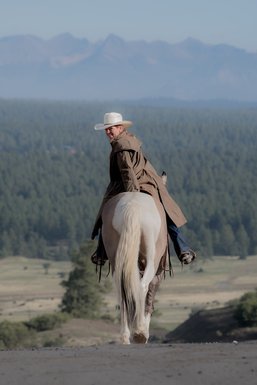 I was thinking about what I’ve learned about horsenality and humanality recently and suddenly realised that although I’ve played with many horses of all 4 horsenalities and combinations thereof I hadn’t ever personally owned a horse of the same horsenality as my personality. In fact, I was surrounded by my opposites, 4 of our personal horses including my own number 1 horse were RBI, another was RBE whilst the remainder were LBI - I even married an RBI! I mentioned this to Linda Parelli during her visit to Sydney in 2013, and she replied with a smile “get ready then!” “Ha, ha, ha” I thought “I have no intentions of acquiring any more horses for a long time so that’s not going to happen in a hurry”….but apparently the universe had other ideas! Over the last 12 months my now 5 year old QH gelding ‘Durango’ started to reach early adulthood, and suddenly I realised that my supposedly innately ‘LBI’ horse was actually showing more and more of his LBE nature, which was emerging as he began to have more and more ‘mature’ impulses. His ‘herding’ instinct was increasing, his ‘mouthiness’ was increasing and his behaviour - particularly in the herd was becoming more and more dominant, challenging and hierarchal. ‘UH OH!’ Ready or not! The horse that was turning up each morning in my play sessions was actually much more like, well…ME! He still has some LBI tendencies, he has a ‘lazy streak’, he is calm by nature and pretty consistent, but boy that mind and mouth is BUSY and getting BUSIER! He is a mild spirited horse, so his extroverted nature was not so obvious and also because he was so close to the centre on the LBI/E side of the horsenality chart. So what is it like to have a ‘like minded’ horse? First, let’s describe me. I am an LBE person very close to the centre on the RBE side of the quadrant. I understand what it is like to want to move my feet and/or my mouth to settle myself emotionally, how frustrating it can be when others DON’T THINK OR MOVE FAST ENOUGH and how a playful mind can either be directed in a productive way, OR turn to ’naughty’ behaviour - ‘mouthiness’ in the human often manifests itself as outspoken, ‘interrupting’, loud and/or blunt verbal language and/or sometimes inappropriate humour and pranks! Yes, I have been accused of being a ‘big mouth’ - mostly by those who have had to live with me 24/7! I also find it difficult to see something being done inefficiently and not ‘interfere’…. I hate to waste time by doing a task more than once because it was done badly. I’m more than likely to do a job myself than trust someone else to do it - I ‘take over’ a lot! (just ask my husband) I’m a BULLDOZER, and proud of it! Ouch - enough beating up on my own personality...what are my strengths? I see the big picture, I don’t get ‘lost in the detail’. • I can manage and direct a lot of energy, I LOVE managing groups of people, bigger events rather than ‘one on one’ scenarios really motivate and excite me, and I LOVE speaking in public when I’m in my ‘element’. • I am good in a crisis…if there’s an emergency or accident, notice how LBE people step in and take over the situation, prioritise what needs to be done immediately and get everyone safe and secure again. We can DEAL with blood and guts and broken bones, and manage a dangerous situation very well. We are also very good at seeing a dangerous situation developing and circumventing it. • I can see what needs to happen NOW in order to create an ‘end result’ quickly and efficiently. • I am a natural ‘leader’ and I am not afraid to challenge, to ask questions, defy the status quo and make ‘breakthroughs’. I can be a bulldozer if I feel something is not ‘right’ and needs to be changed! • I love everyone! (they don’t always love me though!) I also forgive easily. • I am realistic and tell it like it is - no BS! I don’t hide my feelings! But I will happily hand over leadership to someone that can prove they are a better leader than me or better suited to the task. • I get results, and usually fast because I have a very strong focus and energy. • I don’t waste time and/or energy. Hmmmm…some of this sounds like a certain buckskin friend of mine So that sounds like a confident person right? But what about when LBE gets unconfident? What does that look like, and more importantly…what does it feel like? Well let me share with you my personal experience of the ‘unconfident LBE’…maybe it will help you with your LBE horse as it has for me! Some of my students are surprised when I talk about my experiences with unconfidence, because they don’t know the unconfident me. Of course not - that part of me does not turn up when I am teaching, I have already planned, prepared, strategised and thought out every possible scenario before the clinic even began, and I am confident when I am in charge! However I realised some time ago that it is easy for others to assume that I am always confident, assertive and in charge. They are surprised when I can relate so well to their unconfidence and fear! This ability to relate has been a great asset for my teaching career however. Playing with many, many LBE horses (particularly at clinics) has made me realise that most people assume the same thing about their LBE horses. They don’t know how to handle LBE unconfidence and they get confused when their normally mouthy, pushy, confident, dominant LBE horse gets scared. It is common for ANY horse to feel unconfident when it is in a new environment like a clinic, and that is where I usually meet their horses, but it is often a new experience for the owner, they have been playing at home where their LBE horse is running rings around them confidently, and not showing fear! They hear me talking about how right brained their horse is, how it is having confidence issues (in the moment) and they immediately think they have got it all wrong, their horse must not be an LBE…maybe the chart was wrong! They don’t know how to handle LBE unconfidence…but I do! I have to ‘handle it’ regularly in myself! So what is it like? What makes an LBE unconfident, what does it feel like and how does it present? Let me tell you about MY experiences as an unconfident LBE. First of all, the biggest cause of unconfidence for me is losing control of something, a situation or someone in my care. Handing over control to someone else, or turning loose of control is where I really begin to have trouble. Being in the passenger seat (sometimes literally!) is not a comfortable position for me, unless I KNOW the other person is as good or a better ‘driver’ than me. Sound familiar? Anyone got a horse like this? I feel that horse’s pain! Here are 2 examples of events that I have trouble with… 1. Flying. I’m not afraid of flying, I’m afraid of CRASHING! I have to have a VERY good reason to fly, I don’t do it for fun…I do it to get to my students or to the Parelli ranch in the USA! I am choosy over airlines - not too cheap and I want to know “what’s their safety record?” I check out the pilots when I board - how young are they? Not too young I hope, but not too old either…because I’m hoping they have good reflexes, spacial awareness and eyesight! I choose aisle seats (closer to the exit) and I prefer larger airplanes to small ones (so I feel less motion) Sounds silly? Believe me, it’s no joke! 2. Heights. I’m working on this, because I want to advance my horsemanship and this is my personal ‘emotional fitness’ training. I began by climbing a ladder until I felt that ’tingle’ in my lower extremities and used ‘move closer stay longer’ strategies until I could climb on our house roof and clean the gutters without having vertigo. I had the opportunity to test my progress by visiting a gondola ride in Tasmania - a very big step for me! The first time I rode that gondola a year ago I could not look around and I was clinging to the pole like a limpet, swearing under my breath the whole ride whilst dangling a hundred feet above a rocky river. I chose to walk 5 kms over a very steep hiking track to return to town that visit, rather than ride the gondola back across the river again. The second visit this year I was able to look around and even wave to people coming the other way and enjoy the scenery. I even bought a ‘return ticket’ and took some photos on the way. I was clutching my iPad pretty tightly though, and I was glad of the 3km walk back to town afterwards, I really needed to MOVE to drop my adrenaline levels back to normal (I overtook about a dozen people half my age on the way back) When I am unconfident and challenged, my default emotion is frustration followed by anger. I get annoyed, mouthy, snap at my loved ones and I get a lot of housework done - VERY NOISILY AND FAST! If I am around people I don’t know, are intimidated by or submissive to, I either get angry at myself or shut down and start putting up a big mental wall…with a moat, crocodiles and a thorny hedge…you get the picture? If anyone tries to cross that wall, swim the moat or cut down the thorny hedge…I get out my flame thrower and declare war! An unconfident LBE goes on the OFFENSIVE when they are feeling threatened! This is often misunderstood as AGGRESSION. When an LBE is afraid of something…they FIGHT it. So what does an LBE need when they are unconfident? In my case, I need room to express myself safely - which means I sometimes need to stomp around, muttering and even swearing whilst I do a JOB…without the interference of anyone who may be intimidated or offended by my behaviour. I need to know that the people around me don’t take my expressions of frustration personally, or even seriously! I’m just venting! And for god’s sake, don’t try to use logic, reason with me or calm me down! The very best thing you can do is make a joke and walk away laughing…even squirting me with the hose is better than trying to reason with me! (my eldest son once walked into the kitchen and dumped a bucket of water over me during a fight…we fell about laughing immediately and forgot what we were fighting about! Guess what personality HE is? My husband has the BEST strategy for changing my emotional state when I’m like this…he waits until I look at him, then he pokes his tongue out at me. I just have to laugh! (he’s a very smart RBI) Durango has moments of unconfidence. In those moments I see myself in him. I see how he reacts to my pressure, how much he needs me to understand that his opposition to me taking control of him and his ’situation’ is because I haven’t PROVED to him yet that I am a more worthy leader - someone he can safely hand over the control to. Just like me, his trust must be earned, it comes from me not judging his natural dominance and opposition but appreciating it, and not assuming that he will always be confident. I need to remember how I feel and what I need from MY leaders in order to feel really safe and confident about handing them MY ‘reins’ so to speak. So what do I respect and trust in MY leaders? How do they get it right? These are the qualities that an LBE like me values most… - Firmness with FAIRNESS. - Integrity - keeping their PROMISES. - A sense of HUMOUR. They don’t take my ‘passionate outbursts’ personally! - Forgiveness without weakness. They stand their ground without judgement and acknowledge their own mistakes honestly and completely. - Certainty - They DON’T HESITATE when directing me to do something or I will naturally take over! - Clarity - They give directions clearly and succinctly! - Their ACTIONS speak louder than their words. They walk their talk! I have a VERY good BS meter so they have to mean what they say! - They make room for me to express myself. They DON’T repress me. - They give me reasonable boundaries, NOT rigid uncompromising RULES. - They LISTEN to MY ideas…I have good ones! Lots of them! What do I do if someone LOSES my respect and/or trust? I will either push them out of my way, lash out at them, (usually verbally) turn away and withdraw my support or take back control and go my own way. If I am REALLY hurt or feel I have been dishonoured (including dishonesty) badly enough I will AMPUTATE the relationship. LBE is ‘all or nothing’ with relationships where trust/respect are concerned. What do I do if my leader proves to me they are worthy of following? I will fight FOR them. I will help them achieve their goals and be a loyal supportive team-mate for life. I will defend them passionately, go ‘to bat’ for them. I will put in every effort to follow them, and offer all that I have. I will willingly and whole heartedly help them achieve their mission. I will show them the BEST of myself! I will also ENTERTAIN them! Wow, I wonder what that will be like, when Durango feels this for me? 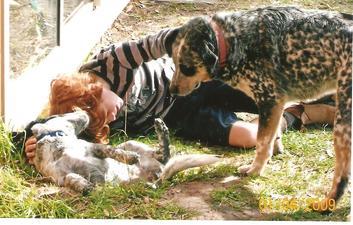 “99% of conflict is caused by a misunderstanding”…I heard this quote years ago, and I have found it to be quite true. In the past I have had the experience of finding out I have been misunderstood, and have lost friends because of it without knowing why. I have felt misunderstood and moved away from someone because of it, without them knowing why….and I have observed friends and colleagues divide themselves because of a perceived ‘slight’ a misunderstanding which then becomes a wound that doesn’t heal. I have a story, it is a story that belongs to one of my children…this time my youngest son Gabriel. (we were being optimistic when we named him for an angel) It is about what can happen when a misunderstanding occurs, and the potential emotional consequences. Thank god he was too young to leave home at the time or we might still be wondering why he hates his mum and dad…and vets. So it started with a puppy. We bought Gabe a 5 month old blue heeler pup when he was 5 years old. Gabe was thrilled, and we knew it would be a wonderful thing – boy and dog just seems a natural fit. But at 5 months, he was almost out of the puppy stage, so as soon as I had a spare moment and ‘Buzz – call vet for desexing’ came to the top of my ‘to do’ list, I phoned the local vet and booked him in for the following day. No sooner had I put down the phone, than Justin my husband walked in the door, so I looked up and said “hey honey, I’ve booked Buzz in at the vet’s tomorrow”…no sooner had he said ‘good idea’ than Gabe walked in the door…”hey Gabe!” says Justin “guess what? We’re taking Buzz to the vet tomorrow to get his balls cut off!”….well, he coulda been a little more delicate in how he phrased it, but Gabe is a natural scientist and a robust kinda kid, so no-one was more shocked than Justin and I when he suddenly burst into tears and ran out of the room. “Good onya darl” I muttered to Justin, as I left the room after him, to cuddle Gabe as he lay crying on his bed. I tried to console him with the following…. “Don’t worry, he won’t feel a thing, the vet will give him special medicine so he will be asleep the whole time’ – nope, he cried harder. “Gabe, we have to do this, he’s getting a bit big, and he’s jumping up on you a lot and getting a bit dominant” – “ I HATE VETS, THEY’RE CRUEL!” nope, haven’t helped a bit. “Gabe, how would you feel if he wandered away from our farm to the neighbours farm and he got shot because he was in with their sheep?” - “I HATE VETS, I HATE VETS!” - man I’ve underestimated this kid’s sensitivity. Well, all I’ve got left is cuddles. And all day he was tearful, periodically bursting into tears every time he remembered about the next day, and “I hate vets, they’re cruel!” was all I heard all day. By this time Justin is saying “ah, he’s just trying to get attention” and I’m saying “no, he’s serious Jus, we’ve underestimated his feelings for the puppy” I’m now feeling protective of my child and Justin is feeling the urge to ‘toughen him up’…so now we’re feeling a bit of conflict too. In between, we keep looking at each other in despair because all our logic is not getting through one little bit…which is unusual and we are out of answers. Jus is getting cross with Gabe and I’m getting fearful for him. It was not a great day….for any of us. And then, in the evening, after giving Gabe his bath, dressing him in his pyjamas for the night…he climbed up onto my lap, looked up at me with his big brown eyes, and said… “Does the vet really have to cut Buzz’s paws off?” “PAWS!? PAWS!? Oh my god Gabe! Did you think Daddy said ‘PAWS’? He nodded his head silently… “NO, NO darling, daddy said BALLS! He’s having his BALLS cut off tomorrow! His little face lit up, and he smiled from ear to ear, wiped his eyes and said “OH that’s OK! I thought you were going to get Buzz’ paws cut off so he couldn’t jump up on me, or wander off to the neighbours sheep paddocks!” The next day we happily went off to town, and Gabe happily handed his precious puppy over the vet for de-sexing, and examined the stitches like the scientist he is when we picked him up to come home. I wonder how many times I’ve been misunderstood. I wonder how many times I’ve misunderstood someone else. After this experience, I have made an effort to give more ‘benefit of the doubt’. To ‘allow’ more…just in case we just simply got ‘Paws’ mixed up with ‘Balls’. |
Chris CorbidgeLead Horsemanship Professional Archives
February 2024
Categories |
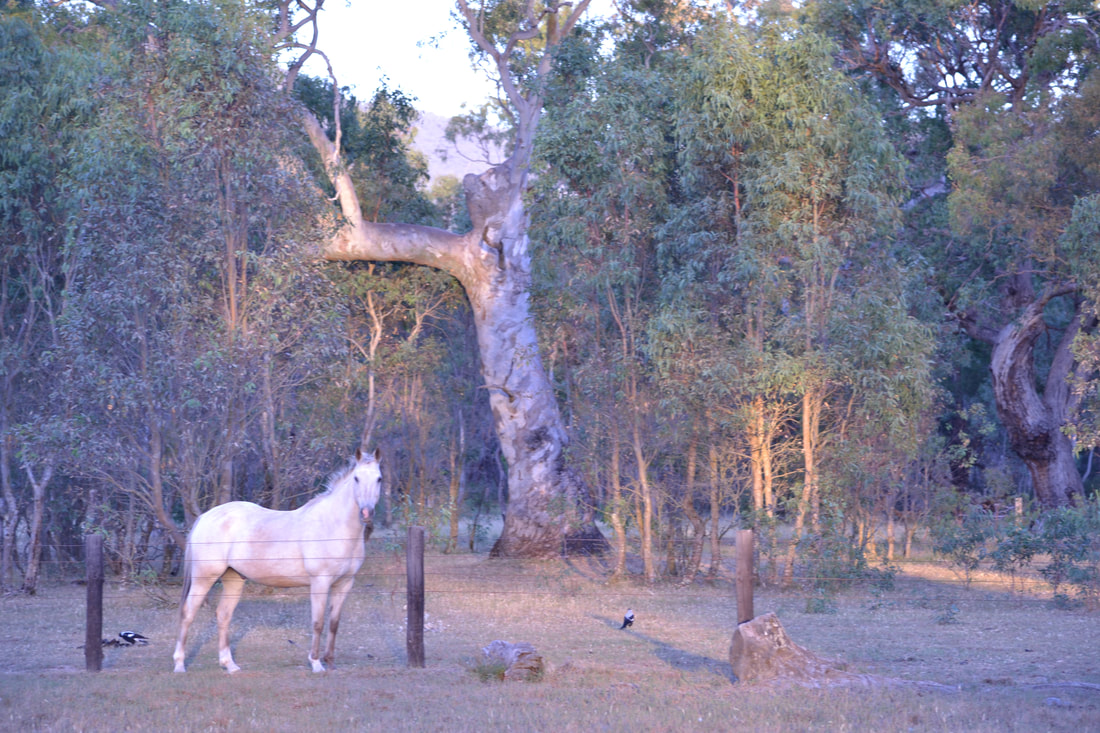
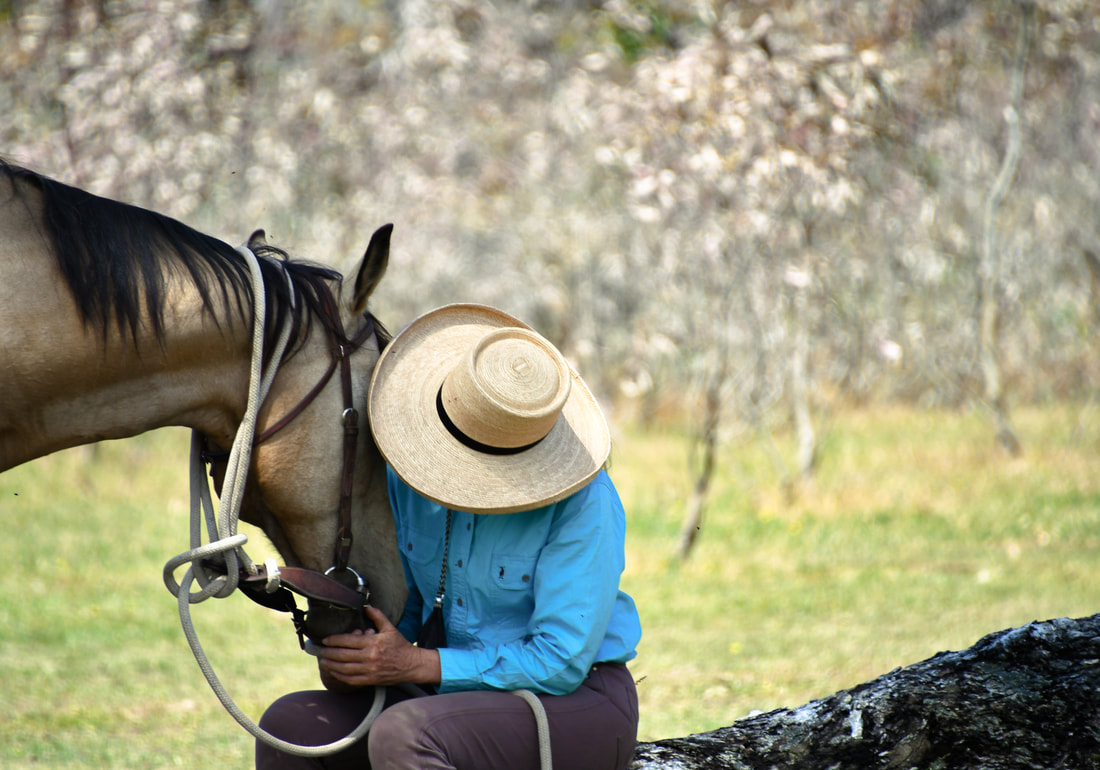
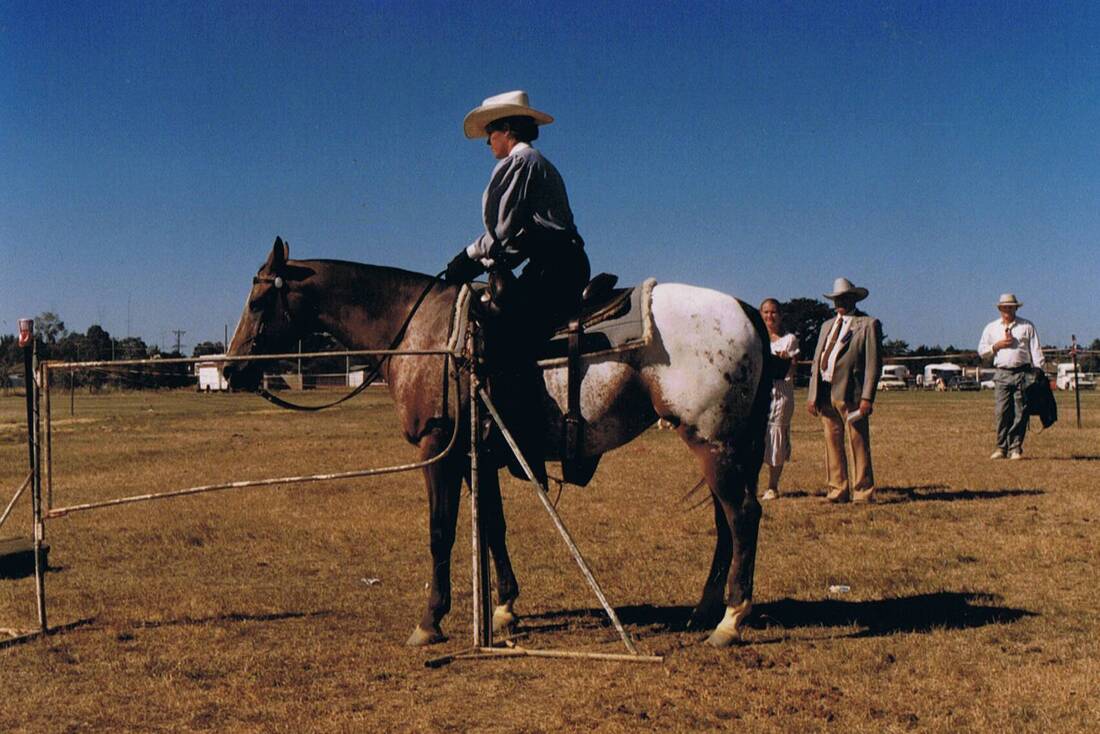
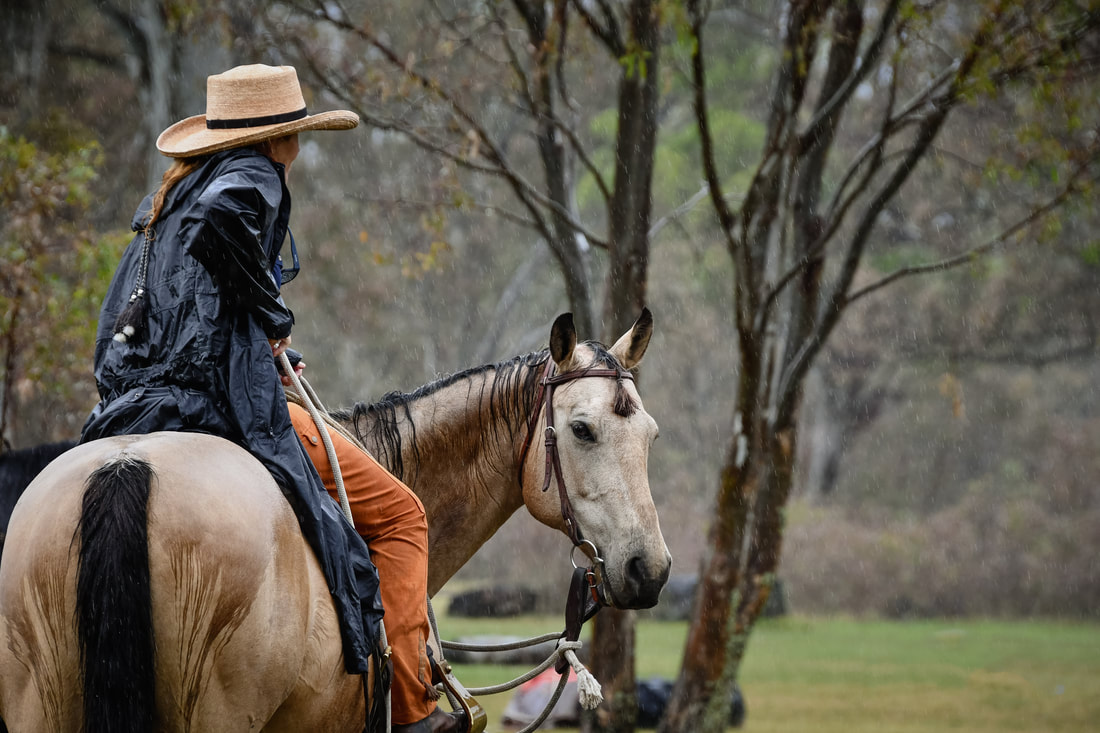
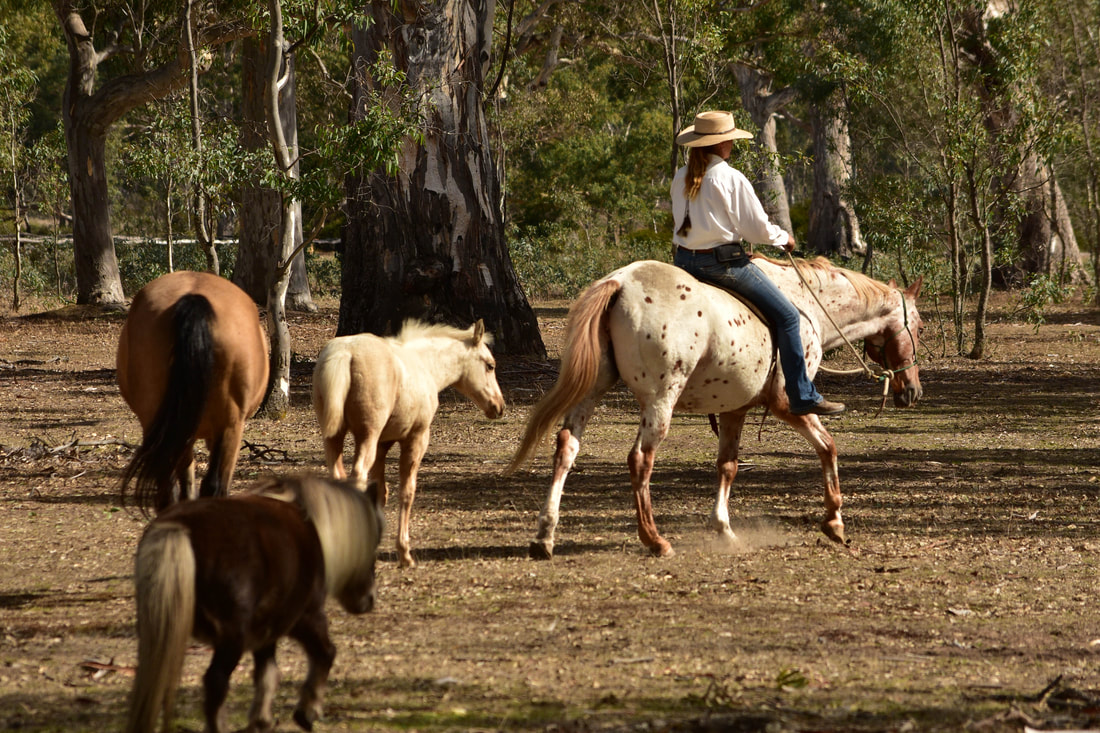
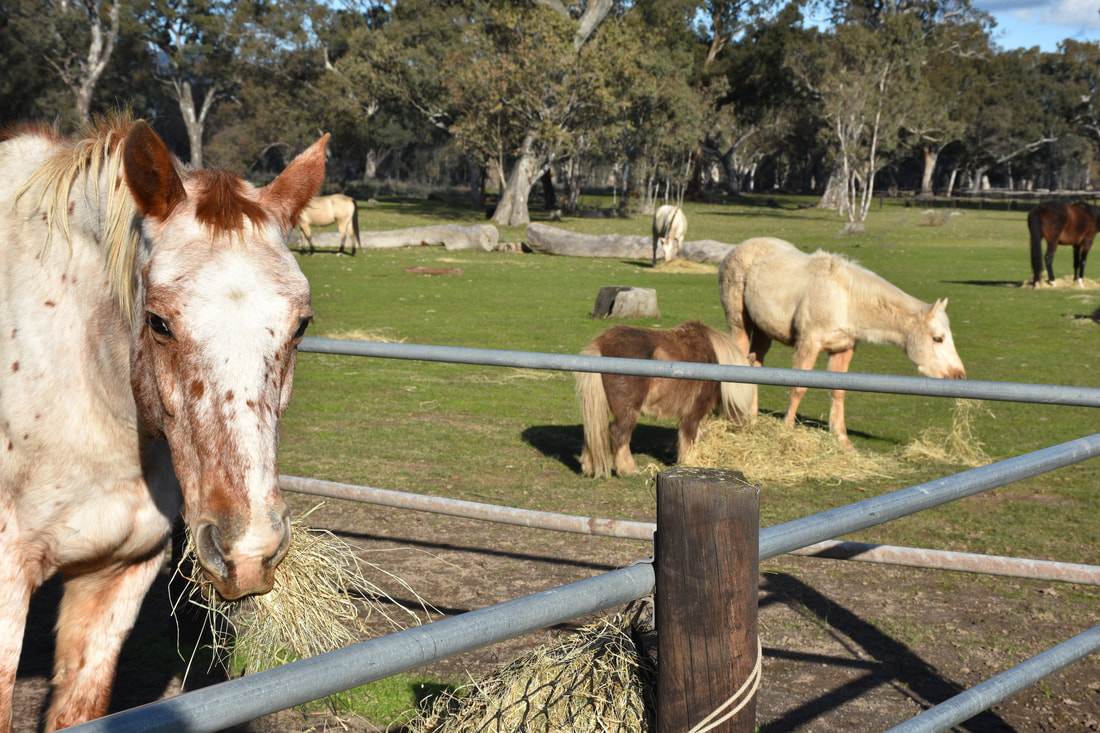
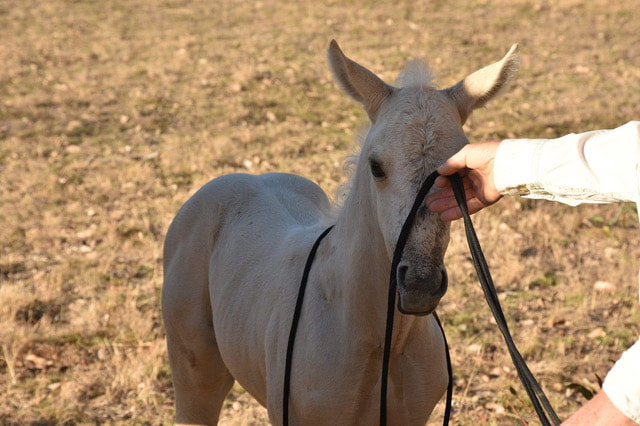
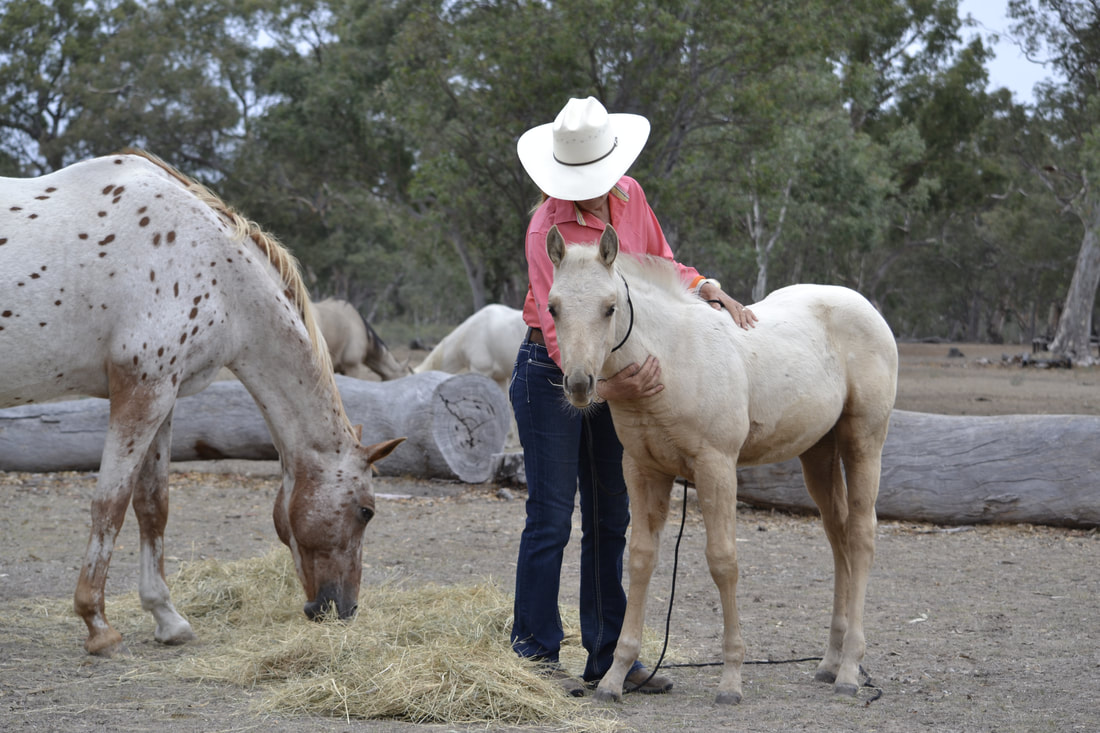
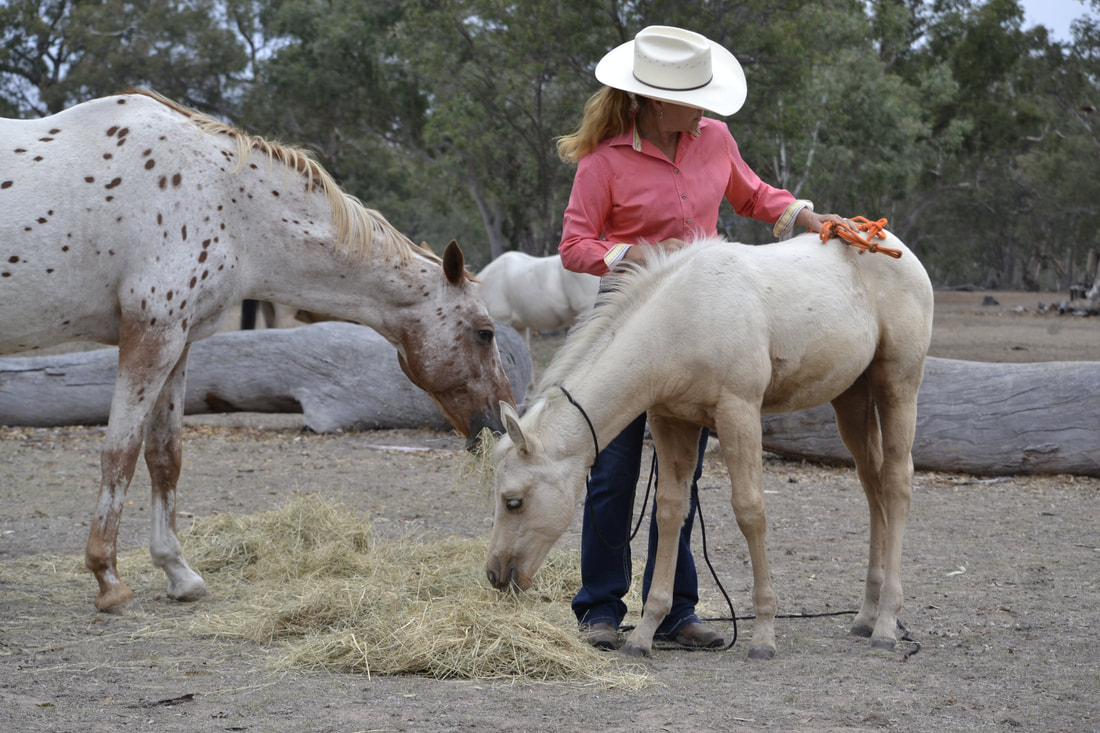
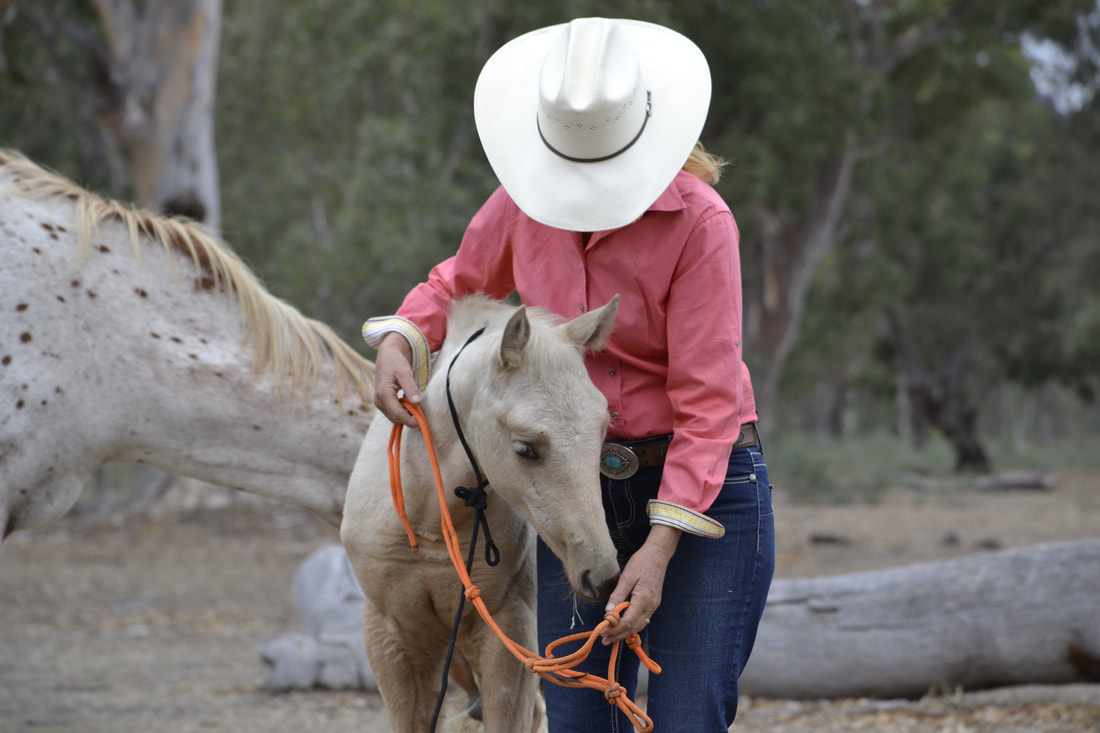
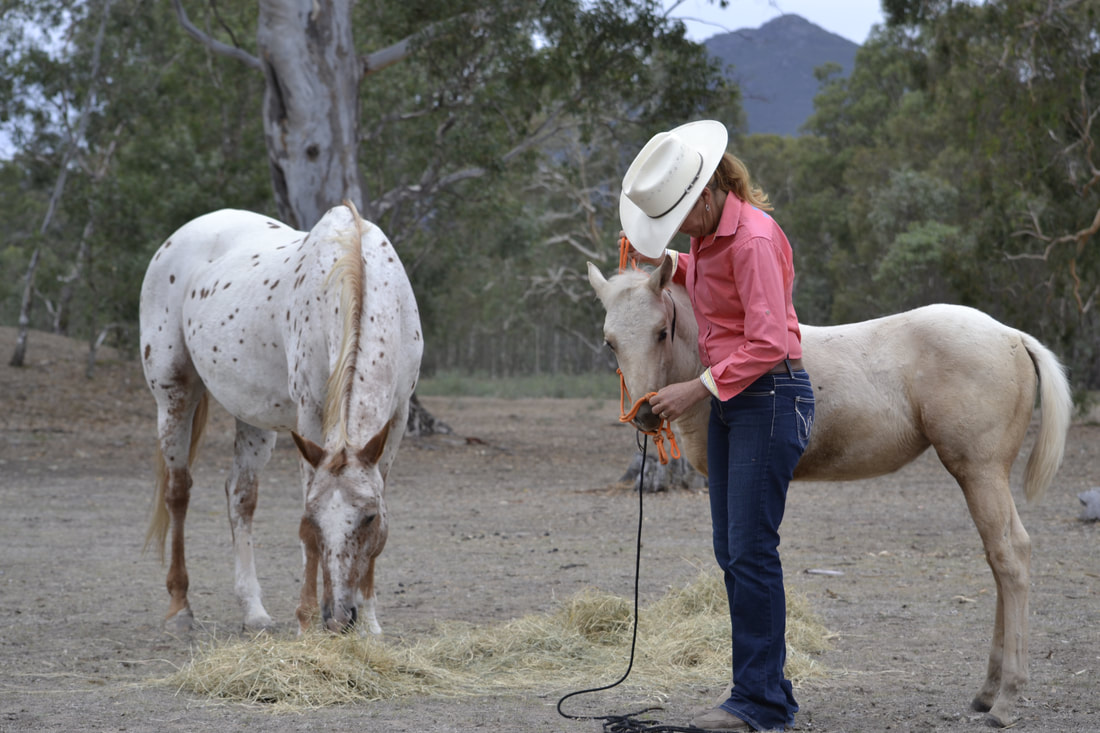
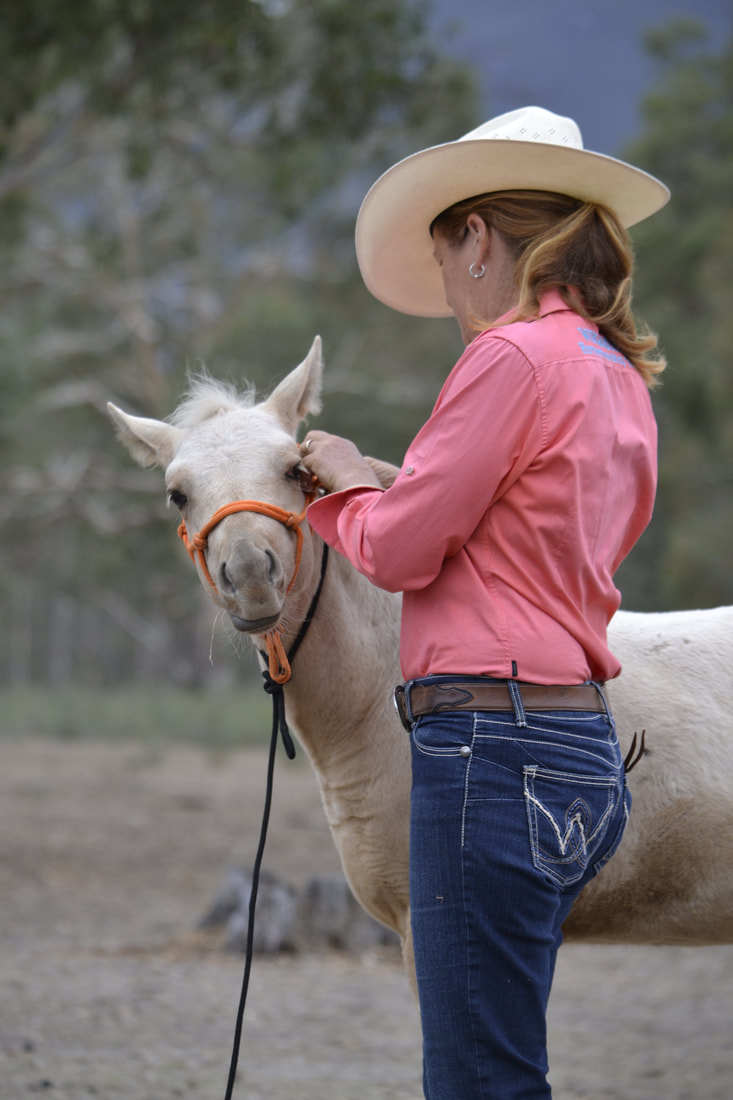
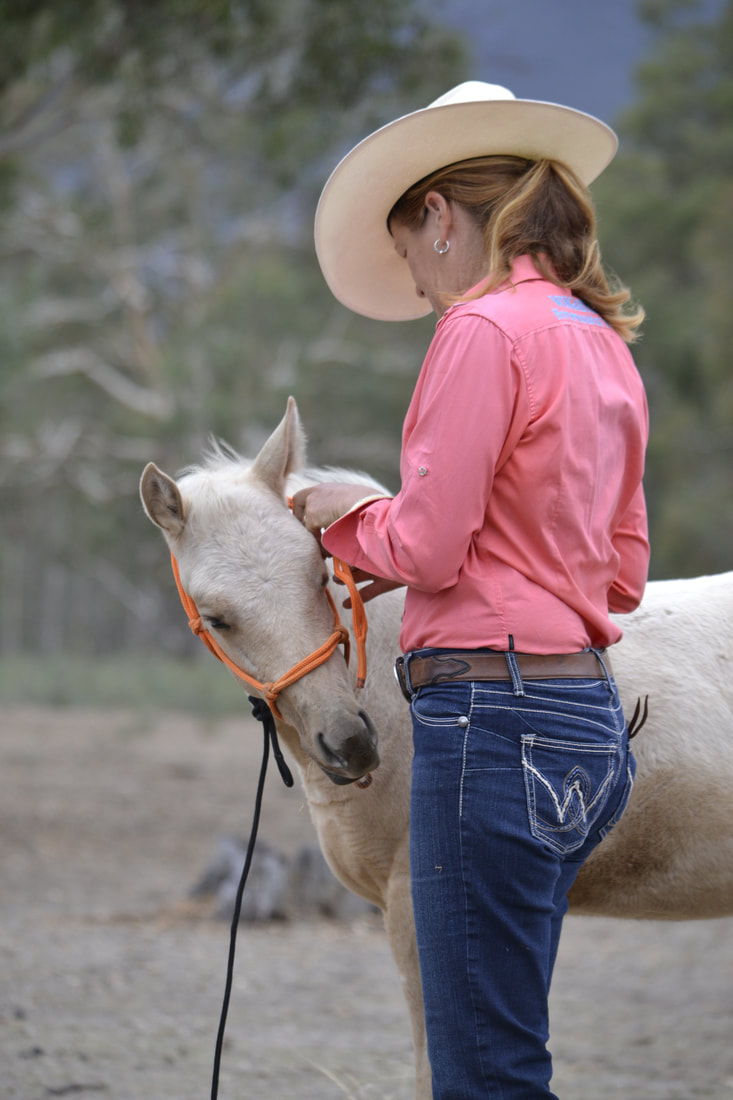
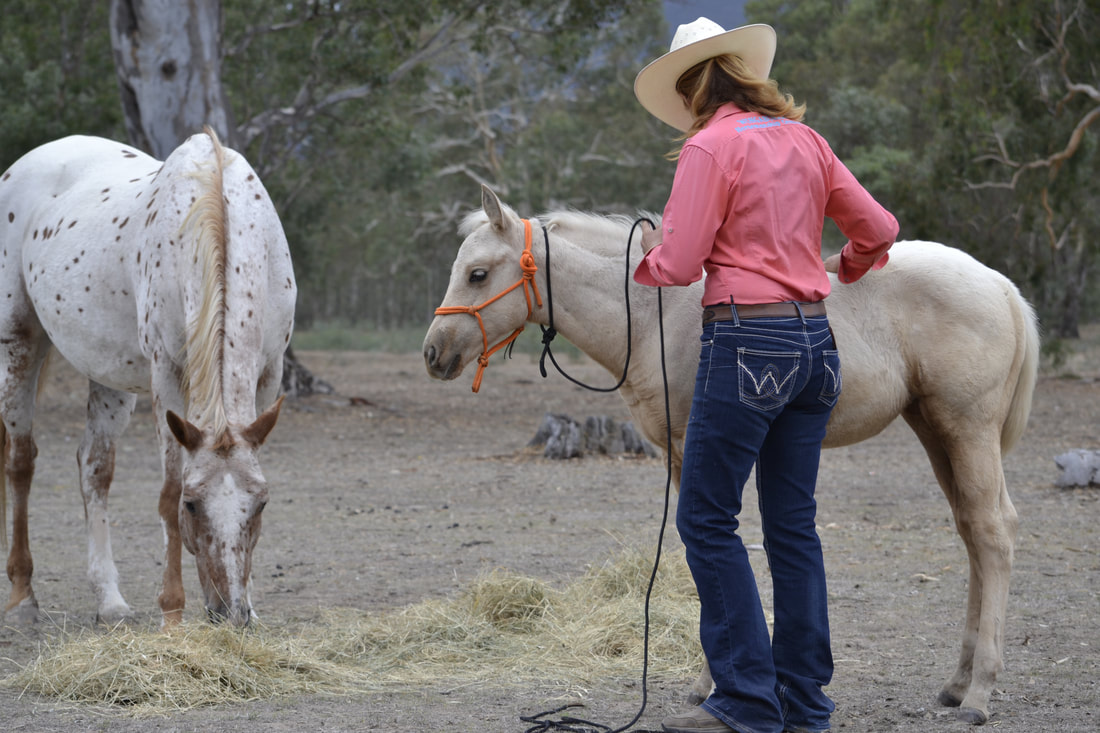
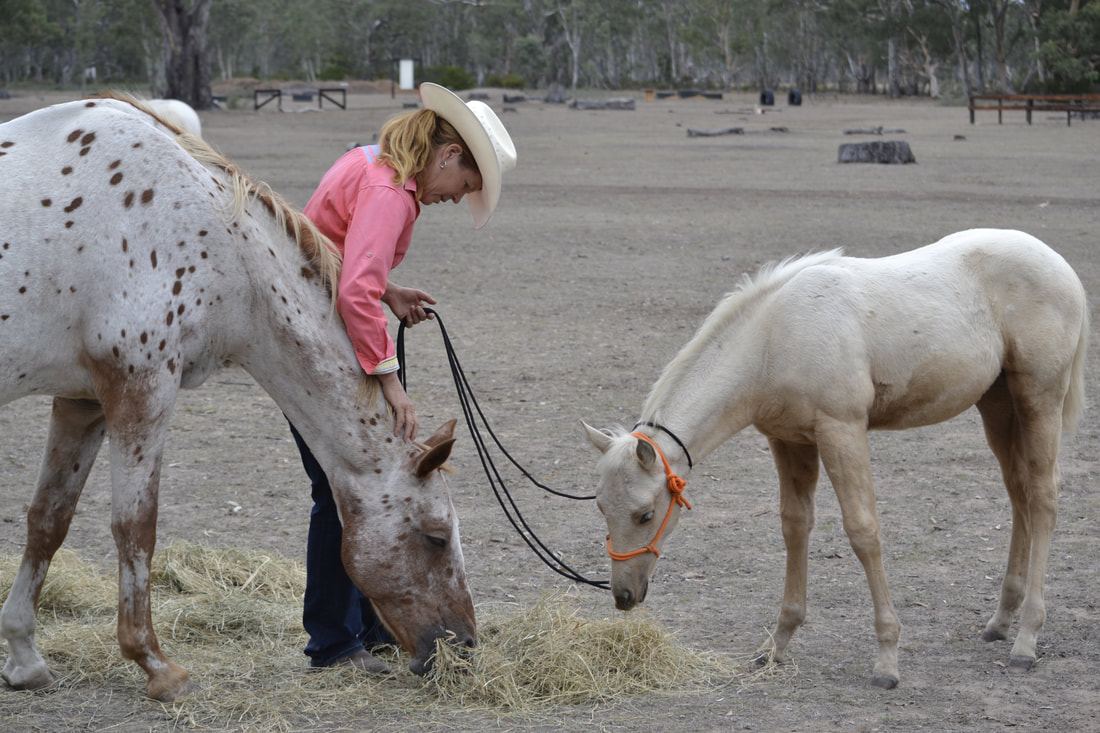
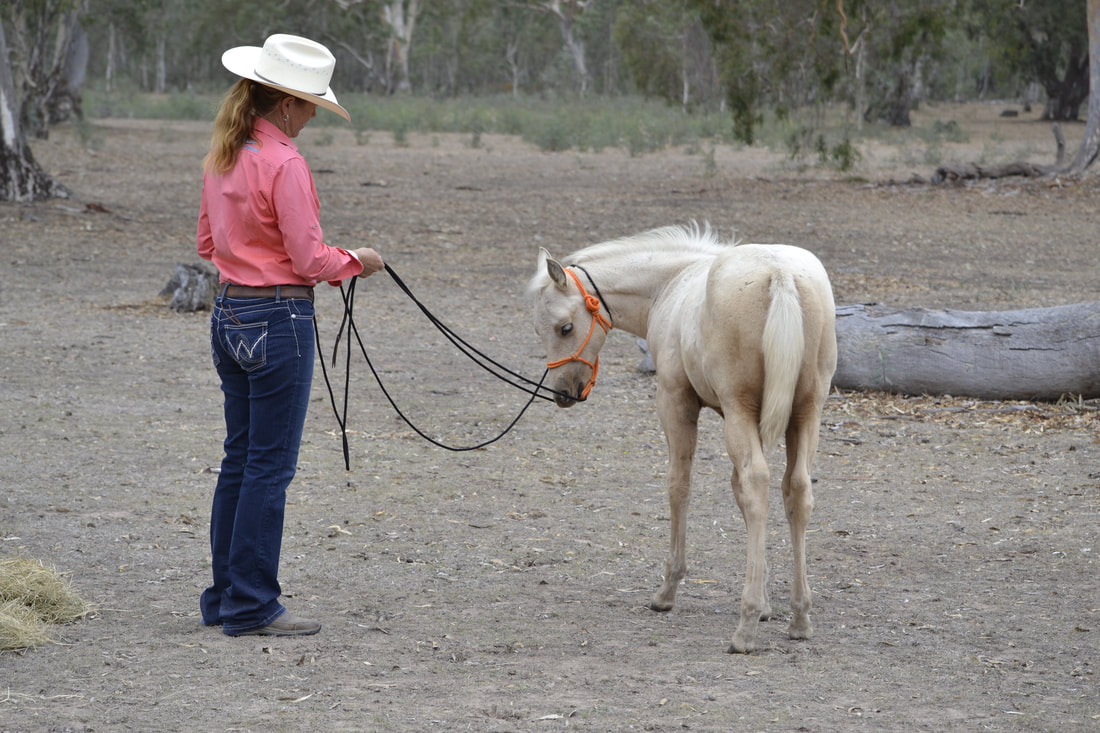
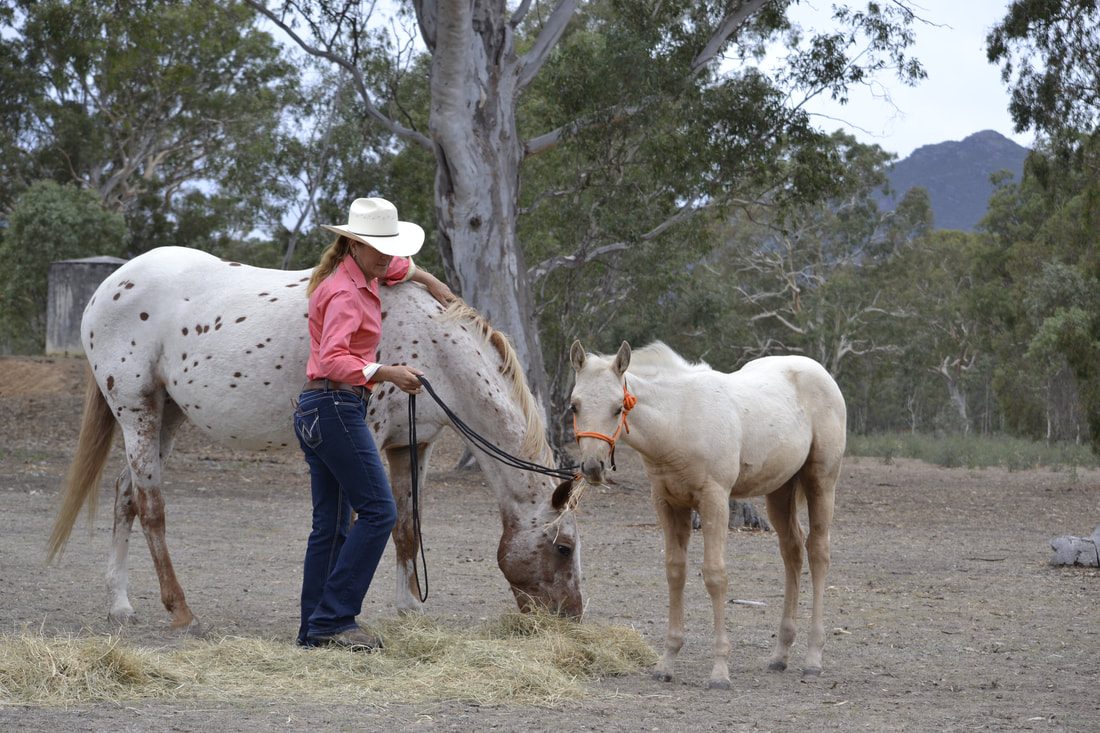
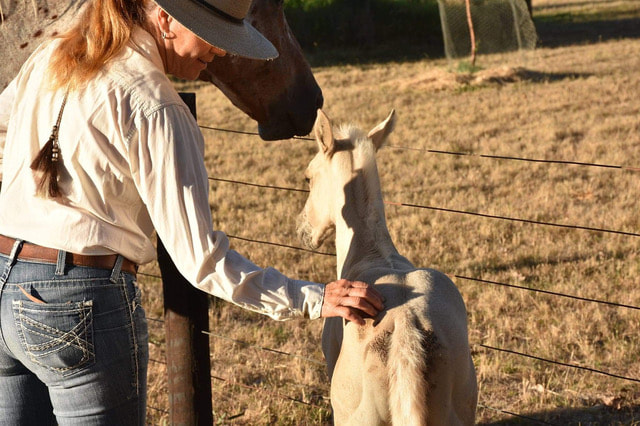
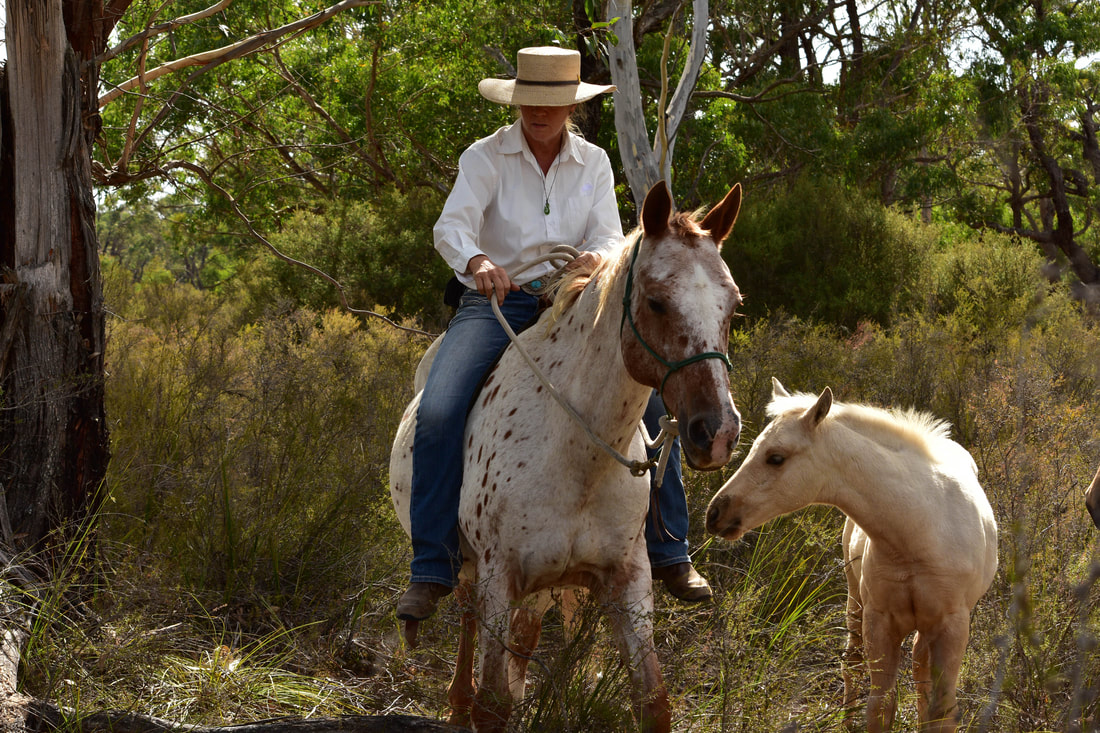
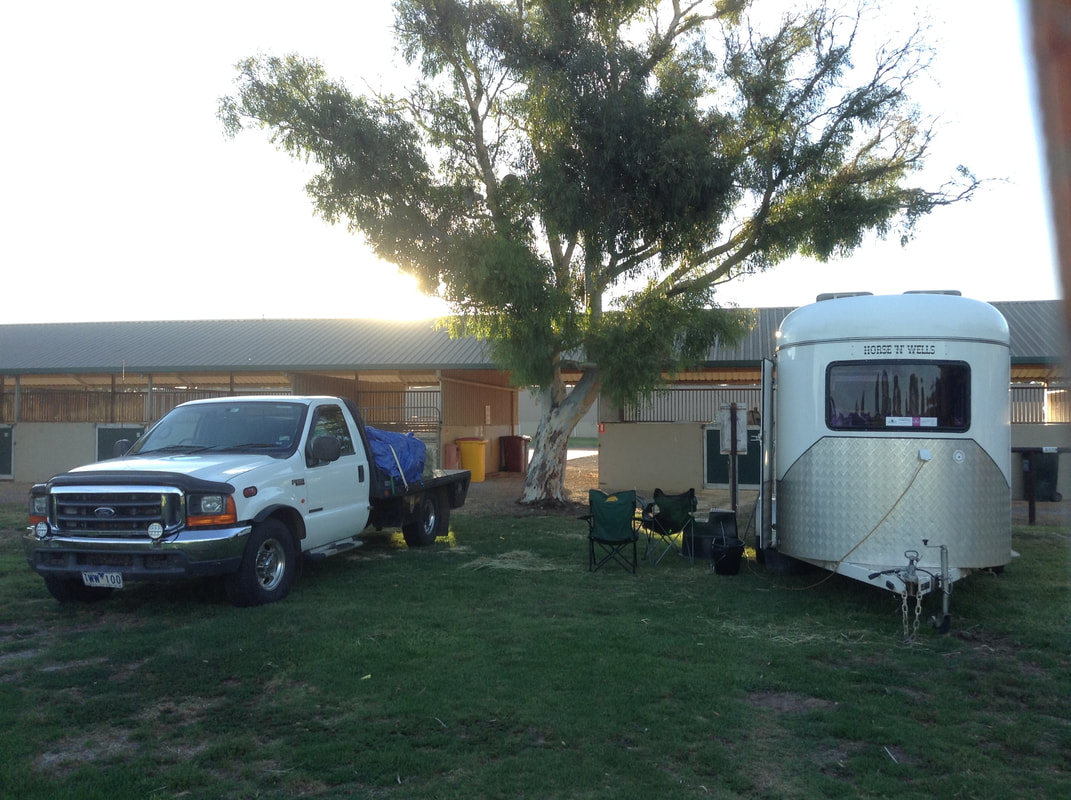
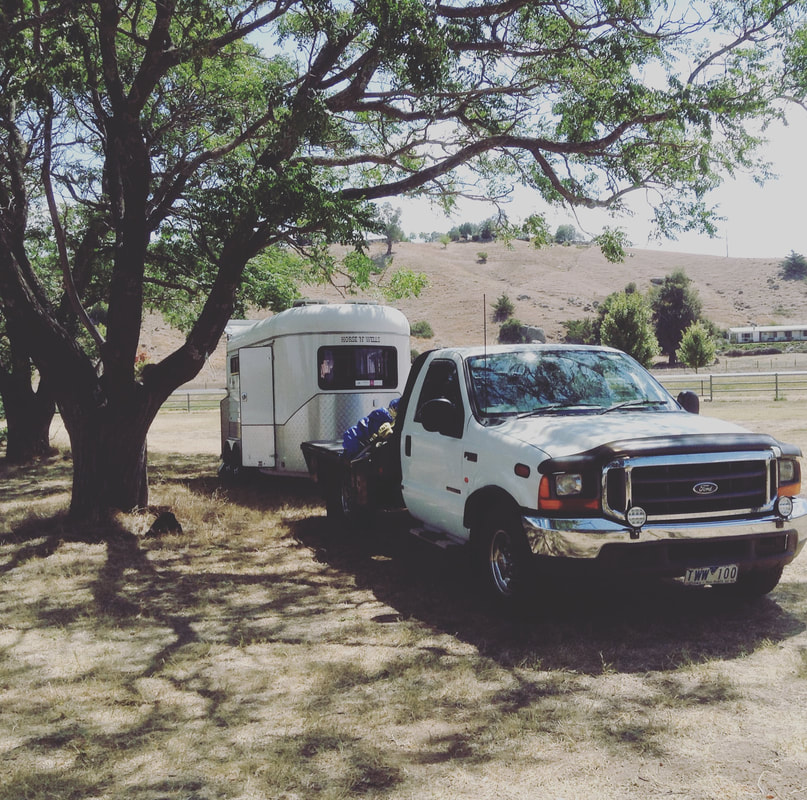
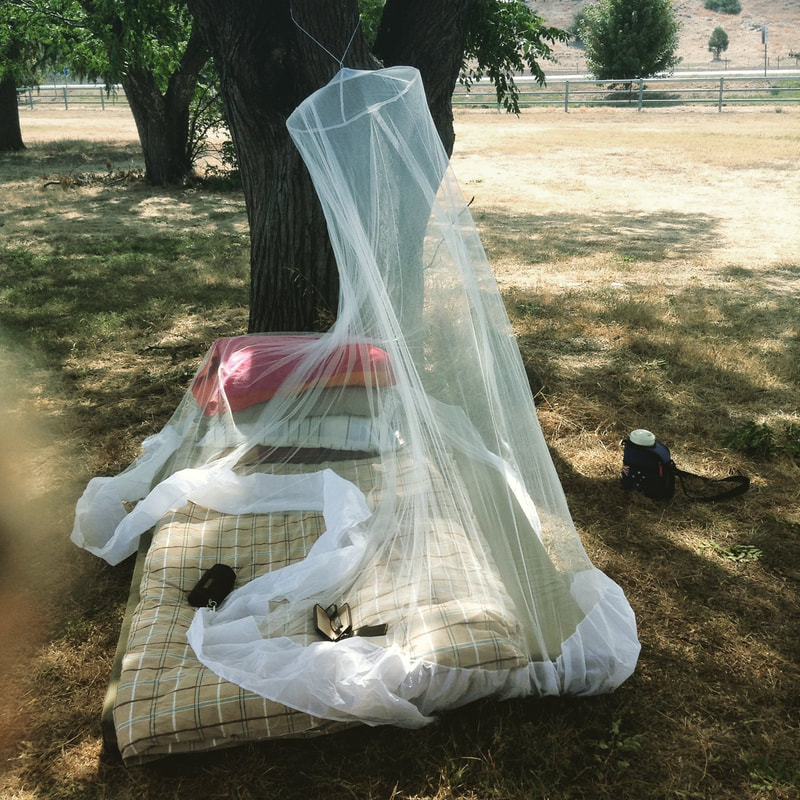
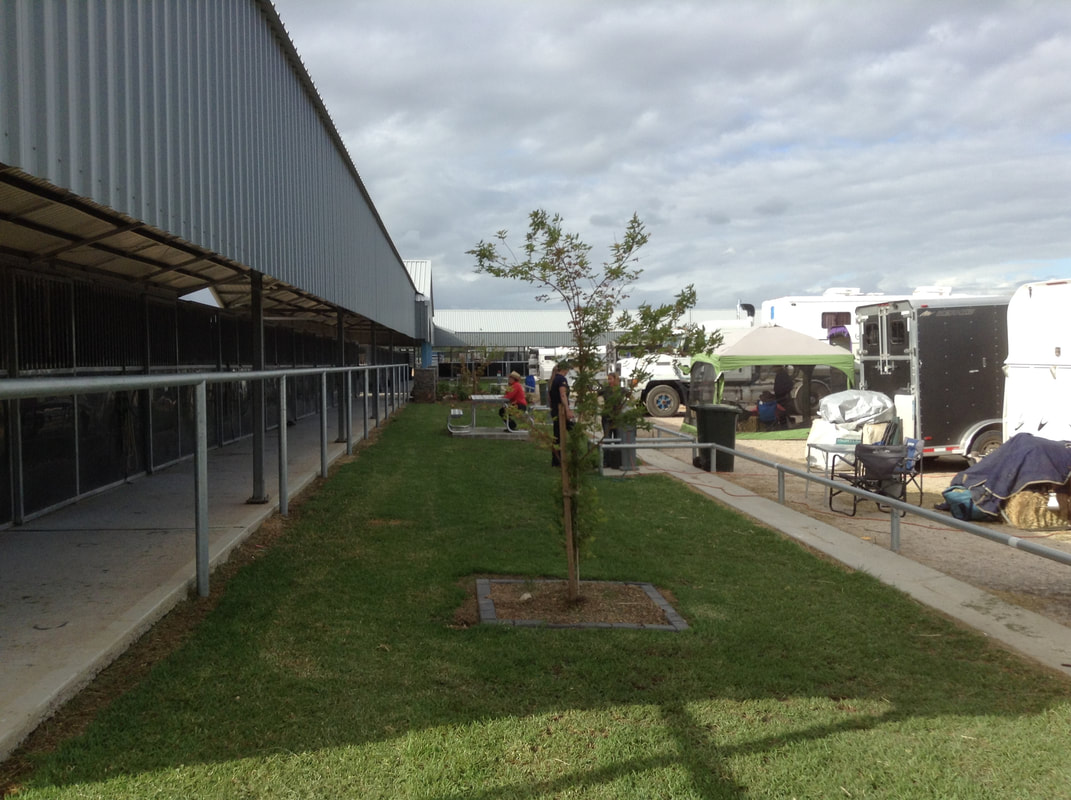
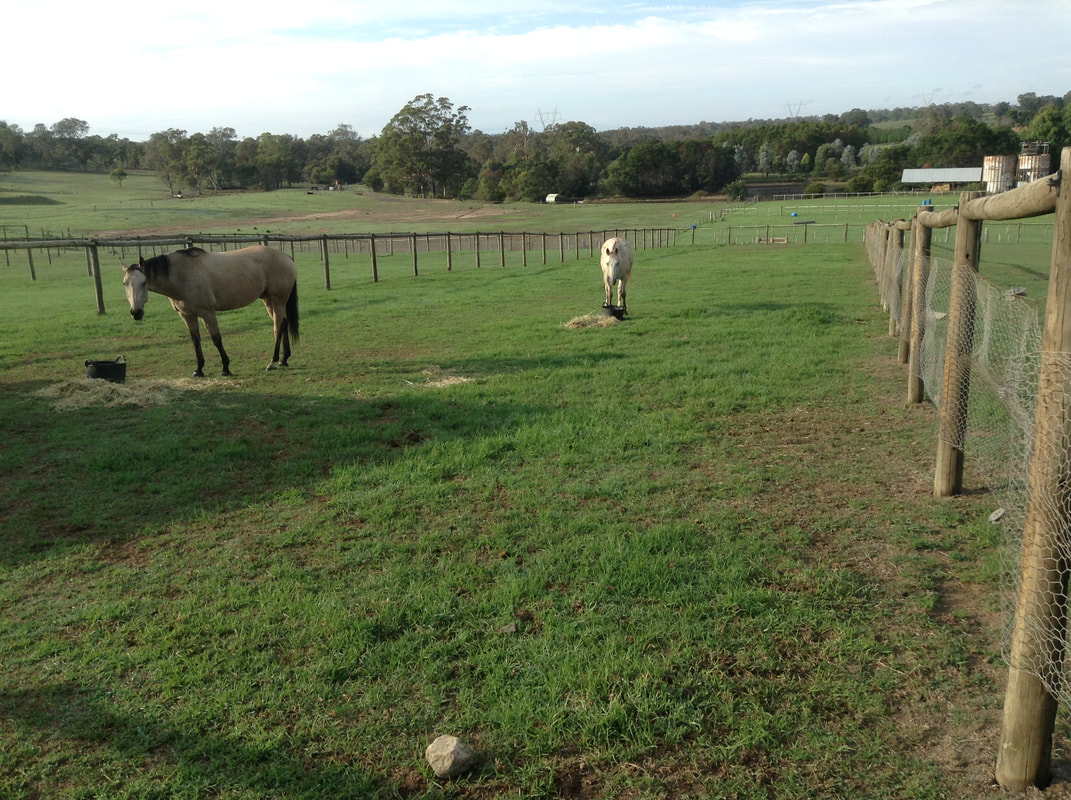


 RSS Feed
RSS Feed